Boat Reviews
- Boats Specs
- Marine Pros
- Boat Insurance
- Boat Warranties
- Boat Transport
- Boat Towing
- Marine Forecasts

Your Ultimate Boating Resource


Capsized Sailboat: 7 Safety Tips When Your Boat Flips Over
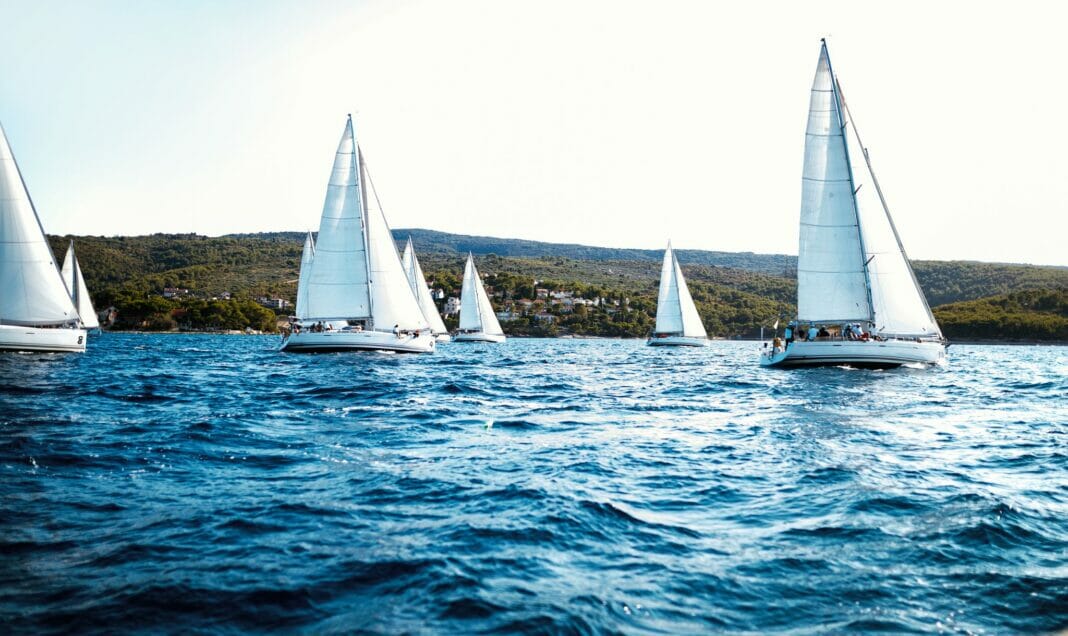
Capsizing is an unfortunate event that can strike even the most experienced sailors. It is crucial to be prepared for such an occurrence, as proper safety precautions and knowledge can make a significant difference in the outcome of this potentially dangerous situation. In this article, we will discuss seven vital safety tips to follow when your sailboat flips over to ensure that you and your crew remain safe and secure.
1. Stay Calm and Assess the Situation
The first and most important tip is to remain calm when you realize your boat has capsized. Panic can lead to poor decision-making and exacerbate the situation. Once you have composed yourself, it is crucial to assess the situation accurately. Determine if anyone in your crew is injured and take a headcount to ensure everyone is present.
2. Secure Yourself and Your Crew
The next step is to ensure that everyone on board is wearing a life jacket or personal flotation device (PFD) and clinging to the overturned boat. Instruct everyone to stay with the boat, as it provides a larger target for rescuers to locate and can also serve as a makeshift life raft. If the boat is sinking or the water is too cold, you may need to abandon the vessel and swim for safety.
3. Righting the Capsized Sailboat
Depending on the size of your sailboat, you can right it with the help of your crew. Before attempting this maneuver, you should ensure that the boat’s sails are released, and the lines are untangled. Next, have one or more strong swimmers go to the highest point of the overturned hull and apply force to flip the boat back upright. Using a specialized righting rope or other capsize recovery equipment may be useful to make the process easier.
4. Getting Back On Board
Once the boat is upright again, you should first help injured crew members back on board. After ensuring everyone is safely aboard, check for any damage or water inside the boat. Use manual bilge pumps, buckets, or other methods to remove water from the cockpit and cabin.
5. Assess and Repair Damage
With everyone safe and back on board, your next priority should be assessing and repairing any damage sustained during the capsize. Check the sail, mast, rigging, and hull for signs of damage, and make temporary repairs if possible. Be prepared with a basic toolbox and spare parts on your boat to fix minor damages.
6. Communicating with the Coast Guard or Emergency Responders
In the event of a capsized sailboat, it is crucial to notify the Coast Guard or other emergency responders as soon as possible. Invest in a VHF marine radio, personal locator beacon (PLB), or satellite phone to communicate during an emergency. Provide them with your location, the nature of your emergency, and the number of individuals on board your sailboat.
7. Preparing for Rescue
While waiting for rescue, it is essential to keep warm and dry to avoid hypothermia. Equip your boat with an emergency kit with blankets, extra clothing, and waterproof gear for such situations. Maintain a visual or audible signal, such as a flare, whistle, or flashlight, to make it easier for rescuers to locate you and your crew.
No sailor ever wants to experience a capsized sailboat, but being prepared for this scenario is vital for ensuring your crew’s and your vessel’s safety. By following these safety tips and maintaining a level-headed approach, you can minimize the dangers associated with capsizing and reassure yourself that you are ready to handle any situation that may arise out on the water.
RELATED ARTICLES
2024 pursuit os 445: an overview, dock your boat smoothly this summer with these tips, the billionaire’s playground: where to spot superyachts around the world, summertime snack ideas for your boating adventure, de-winterize your boat the right way with these professional tips, latest posts, don't miss, our newsletter.
Get the latest boating tips, fishing resources and featured products in your email from BoatingWorld.com!
What type of wood is used for pier pilings?
What is the difference between a dock and a floating pier, what is the proper technique for pulling a beginner wakeboarder, what does ‘no wake’ mean on a lake, what is the difference between wash and wake, 10 essential tips for fishing near private property, the benefits of using a drift sock: guidance for anglers, lure fishing: secrets for imitating live bait and attracting fish, explore the untapped depths of america’s best bass fishing spots, tackle your catch-and-release adventures with these 6 tips, outboard motor maintenance: tips for keeping your engine in top shape, the essential boat tool kit: tools every boater needs, diy boat building: 8 tips and tricks for building your own vessel, the art of miniature maritime craftsmanship: ship in a bottle, antifouling paints: a guide to keeping your boat shipshape, beginner’s guide to standup paddle boarding: tips and techniques, boating for fitness: how to stay active on the water, kayak safety: how to stay safe on the water, anchoring in a kayak or canoe: how to secure your small boat, 2024 aquila 47 molokai review, 2024 sea-doo switch 13 sport review, 2024 aspen c120 review, 2024 yamaha 222xd review, 2024 sailfish 316 dc review, 2023 seavee 340z review, 2023 centurion fi23 review, gear reviews, megabass oneten max lbo jerkbait review, fortress anchors fx-7 anchoring system review, fortress anchors fx-11 anchoring system review, fortress anchors commando anchor kit review, fortress anchors aluminum anchors review, stay in touch.
To be updated with all the latest news, offers and special announcements.
- Privacy Policy

How To Paint A Sailboat: A Complete Guide

Last Updated by
Daniel Wade
June 15, 2022
Whether you’re new to owning a sailboat or not, you have likely put some thought into painting your boat yourself. It is important to keep your boat well painted as it can save you a lot of money in the long run. It can also save you a lot of money if you choose to paint your boat yourself.
Whether or not this is the first time you have painted your boat, you will still find this article useful. It has lots of tips and tricks for making sure you get the job done and get it done well. Hiring a professional may be easier, but there is a sense of pride and accomplishment in doing it yourself. If you use this article as a reference, you can’t go wrong.
Table of contents
Why is it important to paint your sailboat?
Painting your boat is not just an excuse to put some creative flair into your boat, it is an important process in keeping the boat safe. Safe from salt, safe from barnacles, and safe from damage. The paint acts as a vital protective layer, without it your boat will be vulnerable to all kinds of damage. If you have a wooden hull, this protective layer will keep the wood from rotting. It can also plug any minuscule holes that might allow sea life and salt to make its way into the body of the boat.
There is also, of course, the added benefit of having a boat that looks good . A boat is a point of pride and should be treated as such. Having a glossy looking boat is something to be proud of. Most boats are not painted far above the waterline, so it is even an opportunity to make your boat stand out. Some people also believe that painting a boat brings good luck. Unless of course, you paint it green, green is thought to bring bad luck. Whether or not you believe that is up to you.
What are the benefits of painting your boat yourself?
When it comes to painting your boat there are only two options. Hire a professional boat painting contractor, or bite the bullet and do it yourself. They both have their pros and cons, of course, but there is so much more to be gained by doing it yourself. First of all, painting your boat yourself is just as fun as it is difficult. Learning to paint is a valuable life skill that you won’t regret learning as early on in your sailing career as possible. If you can learn to paint your boat now, you will save yourself a small fortune in the long run.
Hiring a contractor is expensive, to say the least, it may be faster and easier overall, but the extra cost can make it simply not feasible. Or simply unappealing. If this is the first time you are painting your sailboat you will need to make a one-off purchase of all the equipment needed for prepping, painting, and finishing the boat. After these one-off purchases are out of the way, you will only need to buy paint and new rollers the next time. Even if you need to buy all the equipment brand new, it can be cheaper than hiring someone else to do the job for you.
How often do you need to paint your sailboat?
The general rule of thumb for painting your boat is that it will need bottom paint about once a year. This is when you will need to take the boat completely out of the water and give it a fresh new coat. If your boat spends all of its time in the water, it certainly needs painting at least once a year. The saltwater is so corrosive that you shouldn’t let your boat go without a fresh coat of bottom paint for more than 2 years. Even if your boat only spends half its time in the water, and the other half on land, you will find that its best to keep its coat topped up.
The top paint, or the above waterline paint, doesn’t need painting anywhere near as often. It isn’t in direct contact with the seawater so it simply isn’t going to get eroded down as much. The salty sea spray can still be damaging over time so this paint should be re-done every 3 years. It can be more or less frequent depending on use and personal preference. Some people like to do above waterline paint yearly, with the rest of their boat, but it isn’t necessary.
What are the best paints to use for your sailboat?
There are plenty of great brands of paint out there, in various colors and shades, so you won’t struggle for choice. There are some things you might want to look for in your paint . For example, you may have noticed that a lot of boats tend to have red hulls. This isn’t just a fashion statement, and while red is supposed to bring luck this isn’t the main reason either. The reason is that this red/orange paint is perfect for added protection along the bottom of your boat.
This red/orange paint is interestingly chosen because it is, of course, traditional; but mostly because of its copper. The copper is actually what gives the paint its red/orange color.
Copper is perfect for the bottom of your boat for several reasons. First, copper acts as a biocide. It stops worms from making their way into the hull if your boat is wooden. If it is metal or fiberglass, it still has the benefit of stopping barnacles and other sea life from attaching themselves deep into the hull of the boat. Copper is also strong enough to hold up to scraping.
Scraping is when you scrape barnacles and other sea life off the hull of your boat. Scraping is an important part of keeping your boat in good condition. It is important to check with the marina or port authority whether or not you are allowed to scrape. If you scrape without permission you may find yourself on the receiving end of a hefty fine. The reason is that they don’t want you introducing invasive species on to the marina floor. This is mostly a problem when you are coming from somewhere vastly foreign, not sailing from New York to Chicago for example.
How many coats of paint does a sailboat need?
When painting your boat it’s a good idea to think about how many coats of paint you are going to need. There is no exact number that is needed, it is mostly to do with how well protected your boat needs to be and how much time you have on your hands. Every coat takes time and attention to detail.
If you choose to do four coats of paint it is going to be time-consuming but very well protected. That being said, the minimum number of coats is two. One is not enough. If your boat only spends part of the time in the water, two to three coats are plenty.
If you are someone who lives on their boat full-time, or at least most of the time, you may want to do more coats. Three, maybe even four, might be ideal here. The reason is that first, your boat is going to experience way more wear and tear than one that is just an ocean part-timer. And second, taking out your boat (which is also your home) is a giant hassle. It is a tedious process, so doing it as infrequently as possible is probably in your best interest. More coats last longer. When you are sailing from place to place, finding somewhere to take your boat out of the water and perform this maintenance is inconvenient. You want to be doing it as little as possible.
What safety precautions do I need to take when painting my sailboat?
All paint can be toxic when inhaled. Even if it is “non-toxic” paint it is going to be harmful to your lungs. They aren’t meant to inhale anything but air, even non-toxic paint is going to be bad for them. This is why it is important to wear a face mask.
Your mask should be specifically for painting, not surgical masks or other cheap medial masks. They are not going to be strong enough, with a fine enough air filter. Whether you feel the need to wear eyewear is up to you during the painting process.
Before the painting begins, when you are scraping and sanding, it is a good idea to wear some goggles to keep debris and splinters out of your eyes. It is also a good idea to wear gloves. You don’t want to rough your hands up too much, they need protection from not only the paint but splinters and sharp pieces of metal.
Painting a boat can be dangerous work. Without taking the proper safety precautions you are putting yourself at unnecessary risk. This safety equipment costs just a few bucks and is equally important as any of the other tools needed to paint your boat.
What tools do I need to paint a boat?
There is more to painting your boat than just using paint and a brush . You will also need tough sandpaper , potentially an angle grinder or welder , paint, primer , brushes, paint rollers , paint thinner , and solvent. You will need to make sure you have all of these things before you start painting. You can pick any of these items up at a boating goods store.
It is a good idea to bring some buckets with you for filling with water, both for rinsing off your boat and your brushes. All of your safety equipment needs to be brought too.
If this is your first time painting your boat yourself, you may find you need to buy all of these things at once. That can be a lot to stomach when its all in one go, luckily, most of these tools and equipment can be reused. Besides, it is still going to be far cheaper than hiring someone to do it for you. All of this equipment is an investment in your boat.
How to paint a sailboat
Whether this is the first time you have painted your boat or not, you may find some of the tips in this next section useful. Painting your sailboat may be tricky at first, but over time you will get the hang of it. The problem with painting your boat is that it can be a very expensive mistake if you get it wrong.
It is important to read this guide carefully, take your time, and make sure you do the job properly. It may be slow going at first, speed will come over time. Once you have gathered all of your safety equipment and tools you are ready to get started.
The workspace
First of all, you need to ensure you have the right workspace. You cant paint your boat in the water so you are going to need to find somewhere to do your work. This is easy enough if you don’t live on your boat full time, take the boat to your house and do your painting on the driveway. If this isn’t an option because you don’t have space or live on your boat full time, you are going to need to rent somewhere. There are typically places affiliated with the marina that you can use. In some cases, these even come with a majority of the equipment you will need. This, of course, drums up the price a bit, but that’s unavoidable.
Your workspace needs to be well ventilated, or you risk making yourself very sick. Both from paint fumes, rubbing alcohol fumes, and fine matter from when you sand the hull down. This means painting your boat in your garage, if it even fits, is not always the best idea. If you do decide to paint outside, it is important to consider the chance of rain. Of course, your boat is pretty waterproof, but once you begin sanding rain might damage the wood if left to sit there.
Before you do anything else, it is important to look your boat over fully from top to bottom. You are looking for any bumps, scrapes, cracks and general damage. This damage is not going to be noticeable while the boat is in the water, so just before you paint it is one of the only times you get to have a close look. Once you have made note of all this damage, it is time to get to work repairing it. Depending on just how severe this damage is, you may want to get help with this next stage.
All of this damage needs to be repaired before anything else can take place. Painting over these damaged areas is just going to hide the problem temporarily, the next time it comes to painting you will find they are far worse. If you don’t deal with this now, they are going to snowball into complicated and expensive repairs.
After your repairs are done it is time to start sanding. This is very time consuming as you need to do it three times. Per coat. First, take the 600 grit sandpaper and make your way around the boat. It is best to use electrical tape to mark out a section at a time so you don’t keep losing your place. After you have finished with the 600 grit sandpaper, it is time to move on to 800, then 1200. This process is important so you will be painting on as smooth a surface as possible. It is then a good idea to wipe the surfaces of the boat down with a damp cloth to remove any of the dust and flakes of metal/wood. Otherwise, you end up painting over them.
You could wash the boat down with a hose but you want to avoid getting the boat unnecessarily wet now that the hull has lost its protective layer. If you are sanding down a boat with a copper paint bottom, you may find the sanding process difficult. Just do your best, it doesn’t need to be 100% perfect. It is important to get as much of the old paint off as possible. Your new paint won’t adhere to the old paint as well as it would to the boat hull itself.
Putting on a layer of primer is not 100% necessary but it is recommended. The idea is that you want your topcoat to adhere to the boat as well as possible, a layer of primer can help you do that. The primer needs to be painted on evenly all over the boat. If you only feel like doing below the waterline, that is fine too. It will save you a lot of time. Putting on the layer of primer is not the most time-consuming part, it is mostly the sanding down that you will have to do. You will need to sand down using the 600 grit paper, then the 800, then 1200. Just like last time. Your layer of primer needs to be as smooth as possible for the maximum adhesion.
Now comes the paint. It is recommended to do at least two layers of paint. One undercoat and one top. Some people choose to go as far as two layers of primer, two layers of undercoat, and three layers of topcoat. This is going to be very time consuming, remember you will need to sand down three times between each layer of paint. You can paint using a brush if you like but is far easier to use a roller. It is also far easier if you employ someone to help you with this stage. It could be your spouse, child, friend, or anyone. It doesn’t need to be a paid professional. It can take a long time to go through this process. Especially if you are effectively doing 8 layers of paint (including primer).
The fastest way to paint, especially if you are on your own, is to use a sprayer. They are easy to use, with a little practice. If you haven’t used one before you may find that you struggle to get an even coat. You should always paint in vertical stripes, not horizontal. Additionally, it is a good idea to have someone following after you with a small brush doing small touch-up jobs. Any unevenness will need to be sanded down and repainted. The whole painting process can take a week if you aren’t efficient.
Take pictures
It is a good idea to take pictures throughout the whole process. This is for future reference. For example, if you take pictures of the boat when you are assessing it for damage, you can compare them to after you have repaired or sanded the trouble spots down. If you cant see the trouble spots still, great! If you can, it will help you keep an eye on them after you have painted too. It’s a good idea to catalog all of these areas if they start to become regular problems you may want to have your boat looked at by a mechanic. You might also like to have a before and after picture for your blog, or just as a personal memento.
Hopefully, you now have all the theory needed to paint your boat. There is a lot more that goes into painting your boat than simply grabbing some paint and a brush. It takes planning, practice, and attention to detail. If you follow this guide you will have no trouble at all. If this is your first time painting your boat, don’t be disheartened if it takes a lot longer than you expected. Speed will come with time, it is far more important to get the job done right than get it done quickly. If you put the work in you will be painting like a pro in no time at all.
Related Articles
I've personally had thousands of questions about sailing and sailboats over the years. As I learn and experience sailing, and the community, I share the answers that work and make sense to me, here on Life of Sailing.
by this author
Repairs and Maintenance
Most Recent

What Does "Sailing By The Lee" Mean?
October 3, 2023

The Best Sailing Schools And Programs: Reviews & Ratings
September 26, 2023
Important Legal Info
Lifeofsailing.com is a participant in the Amazon Services LLC Associates Program, an affiliate advertising program designed to provide a means for sites to earn advertising fees by advertising and linking to Amazon. This site also participates in other affiliate programs and is compensated for referring traffic and business to these companies.
Similar Posts

How To Choose The Right Sailing Instructor
August 16, 2023

Cost To Sail Around The World
May 16, 2023

Small Sailboat Sizes: A Complete Guide
October 30, 2022
Popular Posts

Best Liveaboard Catamaran Sailboats
December 28, 2023

Can a Novice Sail Around the World?
Elizabeth O'Malley

4 Best Electric Outboard Motors

How Long Did It Take The Vikings To Sail To England?

10 Best Sailboat Brands (And Why)
December 20, 2023

7 Best Places To Liveaboard A Sailboat
Get the best sailing content.
Top Rated Posts
Lifeofsailing.com is a participant in the Amazon Services LLC Associates Program, an affiliate advertising program designed to provide a means for sites to earn advertising fees by advertising and linking to Amazon. This site also participates in other affiliate programs and is compensated for referring traffic and business to these companies. (866) 342-SAIL
© 2024 Life of Sailing Email: [email protected] Address: 11816 Inwood Rd #3024 Dallas, TX 75244 Disclaimer Privacy Policy
Capsize Recovery: How to Recover a Capsized Sailboat
If you didn’t already know, capsizing refers to the overturning of our boat in the water. And unfortunately, it’s one of the leading causes of boating injuries and fatalities. There are many reasons why your sailboat might capsize. Overloading, improper anchoring, unsafe boat handling, and inclement weather, to name a few. But is it possible to prevent it from happening? And if it does, can you recover a capsized sailboat? Keep reading to learn how to recover a capsized sailboat, prevention tips, and disaster instructions.
What to Do If Your Boat is Capsizing
Capsizing is an incredibly dangerous (and equally frightening) experience. When it’s happening, it’s hard to think clearly. However, you can follow these steps to ensure the safety of yourself and your crew: 1. Wear Lifejackets Every passenger needs to have access to a lifejacket or PDF . Before the boat fully overturns, try to distribute improvised floatation gear (like seat cushions). 2. Account for Your Passengers Once in the water, visually and/or verbally account for all your passengers. Check for physical injuries, and make sure everyone has the proper safety equipment. 3. Find Help The next step is to look for help. If there are boats nearby, try flagging them down. If not, you might be tempted to swim to shore. If you’re further than 50 meters away, we strongly advise you to resist the urge. In those circumstances, you are safest staying with the boat. Try righting it, or you could climb onto the overturned hull to conserve energy (and escape the cold water). 4. Recover the Capsized Sailboat Use the traditional or scoop method to right your capsized sailboat if you’re able. Unsure how to do that? Don’t worry; we have detailed instructions down below. 5. Use a Distress Signal if Necessary If you are struggling to find help, you can use a distress signal. Most boats are equipped with distress flares, lights, and/or flags.
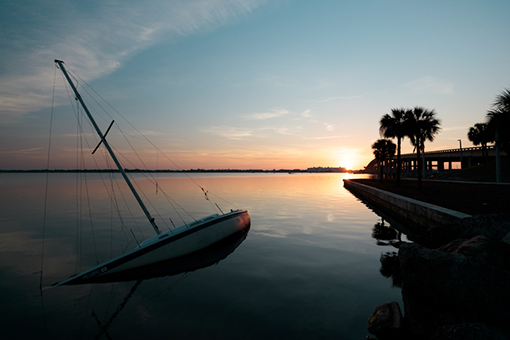
How to Recover a Capsized Sailboat
Once the boat has flipped, most sailors will attempt a sailing capsize recovery. While there are several different ways you could go about this, here are our top recommendations: The Traditional Method Hence the name; this method is the most common way to recover a capsized boat. Begin by positioning the boat, so the mast is downwind (meaning the bow is pointed into the wind). Then, have one crewman stand on the centerboard (ideally, this crewman should be the heaviest of the bunch). Next, they should use their leverage to work the boat back upright. If the boat is in a turtled position, the masthead is fully submerged beneath the water. It might take multiple crew members to right the boat. The Scoop Method The scoop method is another terrific option that can be used when multiple people are on board. It involves the lighter crew member swimming to the boat’s leeward side, lying in the bilge, and hugging one of the cockpit’s fixtures. Then, the heavier boater will stand up on the part of the centerboard nearest to the hull. As the heavier boater stands, the boat will be pulled upright. The lighter boater will be scooped aboard, and their weight will prevent the boat from re-capsizing. Note: To properly perform the scoop method, release the mainsheet and jib sheets. This allows the mainsail to wave loosely once the boat is righted. The Walkover Method The walkover method is slightly different from the rest, as it is performed while the sailboat is actively capsizing. It requires the boaters to walk/climb over the opposite side of the boat toward the centerboard. The hope is that their redistribution of weight will prevent the capsize from continuing once it’s begun.
Read Next: How Sails Work - Sailing in Different Wind Conditions
How to Prevent Your Boat from Capsizing
Overloading your boat is one of the leading causes of capsizing. Therefore, capsize prevention can be as simple as respecting your boat’s weight limit and evenly distributing the weight. Overloaded or imbalanced boats sit lower in the water. Therefore, this puts them at greater risk of being overtaken by rough water or wakes. You should also avoid boating in bad weather whenever possible. While many boaters believe they’re untouchable, a sudden squall can tip even large boats. For this reason, you should be extra cautious if caught in an unexpected storm. Turn your boat at controlled speeds and steer the bow directly into any oncoming waves.
Final Thoughts
We hope this article provides insight into how to recover a capsized sailboat. If you’re interested in more boating safety articles and how-to guides, check out our resources page .
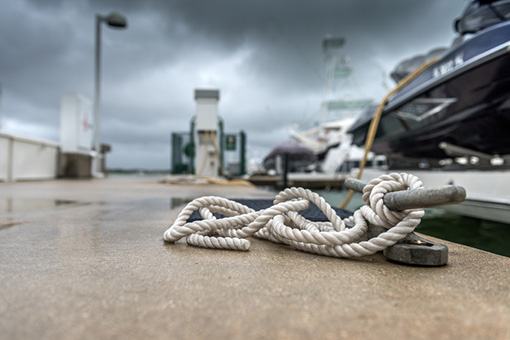
Join Our Newsletter!
Get community news, buying bargains, and how-to guides at your fingertips.
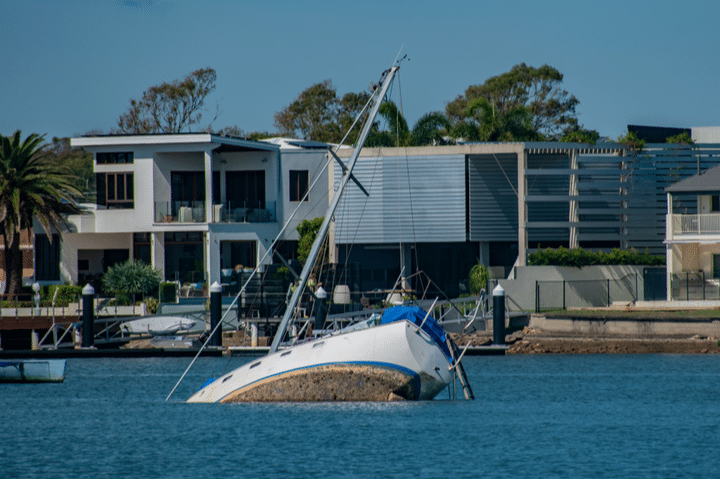
What Should You Do If Your Boat Capsizes

Table of Contents
Last Updated on February 24, 2022 by Boatsetter Team
It doesn’t occur often, but sometimes the worst happens when you are out on the water, and your boat capsizes, putting you and your passengers at a safety risk. If emergency situations occur, it is key that you are prepared for them beforehand. Then, when an emergency occurs, you should know what to do as a result of knowing what steps to take in advance.
In this article, we cover everything concerning the hypothetical situation that your boat capsizes so that you and your crew can be prepared.
What Causes a Boat to Capsize?
A capsize is defined as a boat rolling over onto its side or completely over. Boats capsize because they become unstable. There are three main reasons for that instability: too much or unbalanced crew and equipment weight; leaking water, which also creates too much weight; and bad weather, which causes instability as the boat is rocked and filled with water.
What Boats are at a Risk to Capsize and Why?
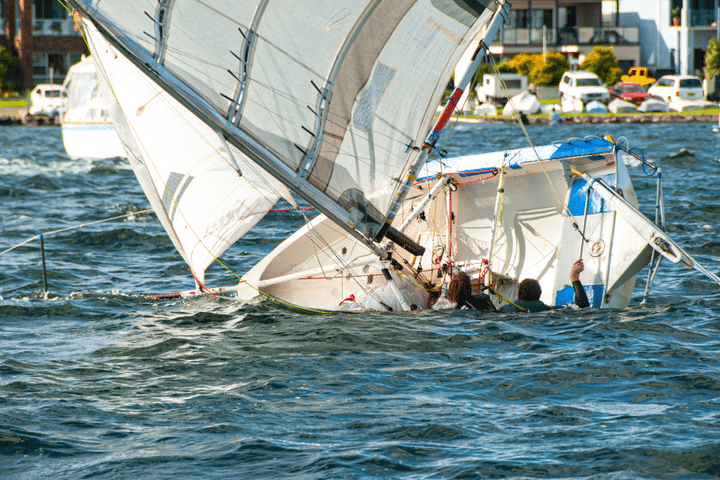
The majority of capsizes are smaller boats. About 10 percent of capsizes are 8-footers, mostly dinghies, and these capsize often don’t cause very much damage. The biggest group by far consists of 15-19 footers, representing 41 percent of all capsizes. These boats are typically fishing boats, often with large, hard-to-drain cockpits, sometimes out in poor weather, and sometimes overloaded. The next most common group are boats in the 20-24 foot range, representing 25 percent of all capsizes; finally are the largest boats, those over 25 feet, representing 18 percent of all capsizes.
Poor Weight Distribution
The most common cause of boat capsizing is poorly distributed weight. The 15-19 footers are the most susceptible to the main cause of capsizing, which is poorly distributed weight, such as an extra person or two or a couple of heavy coolers aboard. Older boats especially may have gained weight over the years as more gear is stored aboard. On boats with cockpit drains, a large friend or a second cooler may be all it takes to make the water come back through the drains, filling the boat. While most of these under 20-foot boats must have floatation, they must also have a capacity plate that states how much weight and how many people can be safely on board.
It’s important to pay attention to this number and keep in mind that the number of seats in a boat is not always an indication of the number of people a boat can safely carry. Exceeding the capacity limits, even in calm water, can put you at a much higher risk of capsizing. All it may take is a stiff wind, a large wake , or an unbalanced load to lead the boat to flop over. Additionally, where the weight is distributed is almost as important as the amount. Too many people on one side of the boat forces the gunwale too far down, potentially allowing water to pour in. For this reason, boat manufacturers often proved a diagram for each boat showing where passengers can safely sit, not to upset the boat’s balance.
Some boat manufacturers label upper decks on their larger boats to indicate how many passengers can be on upper decks. The weight that is substantially above the waterline raises the boat’s center of gravity and makes the boat less stable and more likely to capsize. Another thing to keep in mind is that people have gotten larger over the years.
The Center for Disease Control (CDC) says that the average weight of an individual in the United States has increased to 185 pounds, up significantly since commercial passenger-carrying regulations went into effect in the 1960s when the average American weighed 160 pounds. As you can imagine, those extra pounds can add up, especially on larger boats that are capable of carrying many passengers, causing your boat to be unbalanced. While it may not be your initial impulse to do so, it’s a good practice to eyeball your guests and try and get a ballpark estimate of weight before you take out a larger group.
The bottom line is that loading too much cargo or too many passengers in one part of the boat can affect the boat’s stability, even when the total load is within the boat’s maximum capacity. Additionally, weight needs to be evenly distributed, especially on a small boat.
The second major cause of capsizing is leaks. Sometimes it’s as simple as forgetting to put in the drain plug; other times, it’s leaking fittings. Water sloshing around in the bottom of the boat affects stability, allowing for waves or a wake to cause the boat to flip. Tying the drain plug to your boat is a simple way to remember the plug. On the other hand, leaking fittings that can fill the boat with water are usually out of sight, often in livewells and bait boxes. Any fitting that penetrates the hull needs to be closed and made from stainless steel, bronze, or marelon.
Many older boats have low transom cutouts that can cause the boat to flood simply by slowing down too quickly, especially with excess weight in the stern . Newer outboard boats have a well that reduces this particular risk.
Some boats have cockpits that drain into the bilge , requiring the use of a bilge pump even to stay afloat. Bilge pumps are designed to remove nuisance water only, not to keep a boat from sinking. One must be cautious if your boat’s cockpit drains into the bilge because if the bilge pump fails, your boat can fill with water and capsize or sink.
Bad Weather
The third major cause of a capsized vessel is bad weather, which often acts in concert with some of the factors spoken of above, such as overloading or unbalanced loads, to cause a boat to capsize. Small boats are easily overwhelmed by modest waves or even a large wake, especially if they have a large load and sit low in the water. A sudden squall can flip even larger boats. Therefore, it is important to check the weather forecast before going out and keeping an eye on the sky.
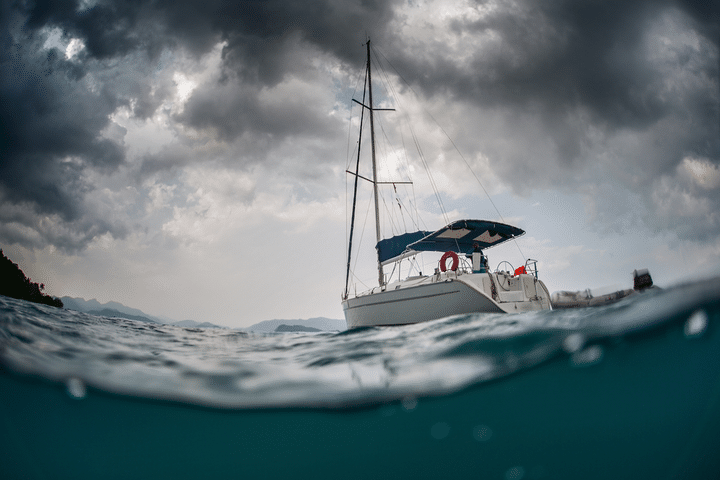
In most areas, NOAA broadcasts continuous weather via radio. If you are in a cellular data range, smartphone apps can show you detailed weather maps, including radar, indicating approaching storms. Since weather changes quickly on the water, you need to head back to the dock at the first sign of bad weather. If you do happen to be caught in a storm, you and your passengers should stay low near the boat’s center to maintain stability.
How to Proceed if Your Boat Does Capsize
Now that we have gone over the risks of capsizing that each boat faces and how you can avoid these risks, it’s still important to know what to do if your boat capsizes.
The first thing you should do when a vessel capsizes is, check the people onboard and make sure that no one is injured.
If you made the mistake of not wearing a lifejacket or a PFD, find one and put it on. If you can’t put it on, hold onto it and have the other passengers do the same.
Next, do a headcount of those who were on board.
The most important thing you can do is stay with your boat if it remains floating. This exponentially increases your chances of being rescued by fellow boaters or the coast guard rescue crews. It’s a lot easier for someone flying over in a helicopter, for example, to find an inverted hull in the water than people floating in the vast sea.
Another recommendation is to retrieve as many supplies as possible from the capsized boat, such as flares, distress signals, and extra flotation devices. Find anything that floats and tether it to the boat to create a bigger target for people searching for you. Another strategy is to release some items into the water to create a debris field which also helps spotters.
If the boat is still floating, try to climb onto the hull to reduce exposure to the water. Water steals body heat 25 times faster than air does. To stay warm and stave off hypothermia, you and the other passengers need to huddle together to pool warmth.
It’s important to remember that if you are more than 100M from shore, don’t try and swim to shore. It is safer to stay with your party and the boat and wait to be rescued.
Conclusion:
It’s easy to feel that you are invincible when you are out on the water in your boat of choice. Still, the fact is that it is important to keep an eye on the safety of you and your passengers, especially when it comes to the possibility of capsizing. Too much weight or unbalanced weight can severely affect your boat’s stability. Leaks can also be a large contributing factor to capsizing. And finally, one must always be wary of the weather when going out on a boat.
In case of disaster, It is important to follow the procedures listed above, such as putting on life jackets , staying with the boat, and salvaging all life jackets and floatation devices from the boat to increase your visibility. By following these procedures, you increase your and your passenger’s chances of a safe rescue.

Boatsetter empowers people to explore with confidence by showing them a world of possibility on the water. Rent a boat, list your boat, or become a Boatsetter captain today.
Browse by experience

Explore articles
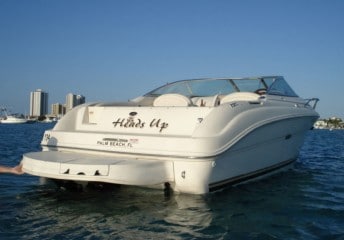
Boating Etiquette Part 2: A few more boating tips for beginners
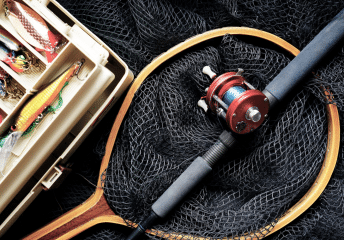
10 Facts About Fishing Most People Don't Know
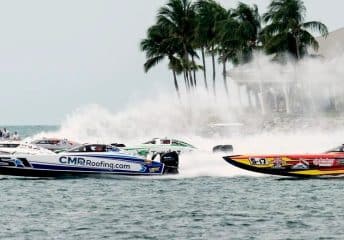
Key West Boat Races: 2022 World Offshore Championships
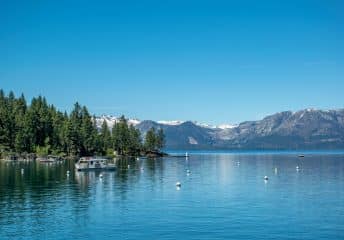
Zephyr Cove Boating Guide
Dick Elam's Been There
Thoughts and Stories Across Many Years
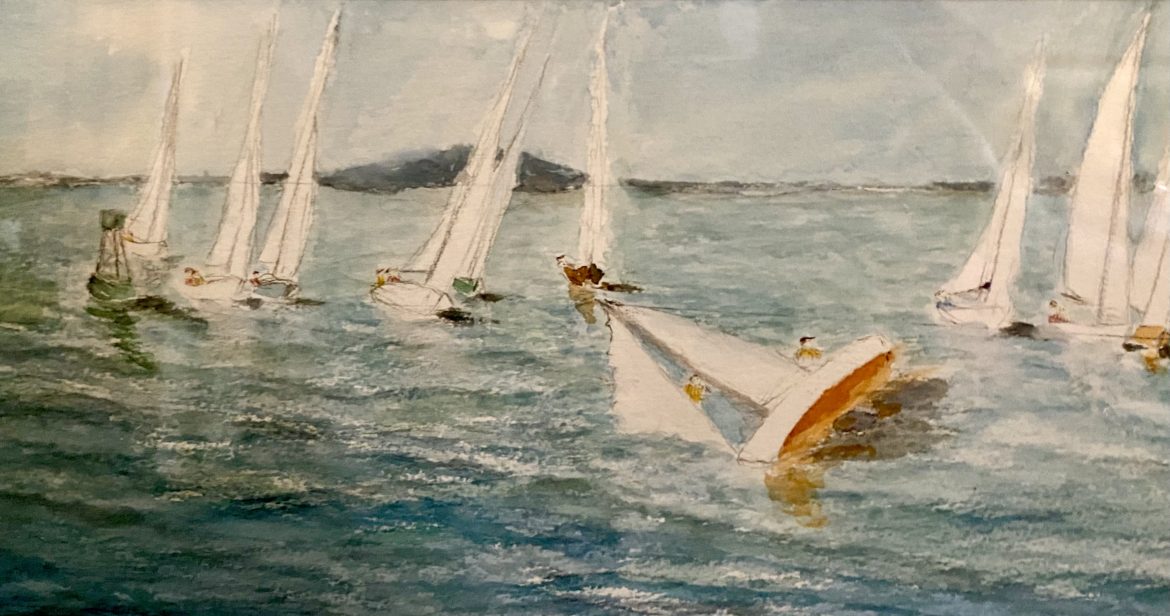
Fear of Capsizing
Imagine what the ‘Shrink’ would say when he saw the capsized boats in my acrylic paintings:
“So Mister Elam, after you quit racing sailboat dinghies you painted two pictures of capsized sailboats. Do you sometimes dream about a sailboat turning over?”
Of course not. My dinghy crew and I always wore a life jacket. Not afraid of capsizing, but just good practice.
The acrylic painting above is the right side of the painting entitled “Over Early!” The boat has capsized because the committee boat, not shown to the left, fired a cannon across the starting line, and….Doc, it’s just a jokey painting.
“I see. Now let’s talk about your last painting before you took up fiction writing. You depicted a crew sliding off a fifteen-foot ‘Snipe,’ holding onto a rope and pulling the boat into a capsize.”
Hey, Doc that was no joke. My old Abilene friend and I moved to the Olympic Peninsula in Washington state. Frank Clevinger is the skipper. His idea to rent a Snipe and enter the race on Lake Washington. We would be the oldest entry.
And today that painting hangs in a sailboat hardware store that also sells life preservers. Next door to my son Kelson’s office. Kelson is an international sailboat skipper. Once won European Flying Dutchman sailing championship.
“Uh-huh. And what did your son Kelson say when he learned of your capsize?”
He said, “You’re both 80 years old. What ever were you thinking?”
Related Posts
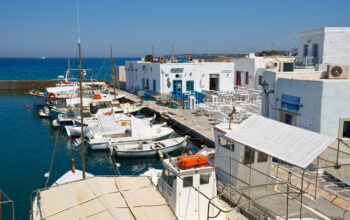
Sailing Becalmed

Bruised Bluebonnets
Leave a reply cancel reply.
You must be logged in to post a comment.
Terms and Conditions - Privacy Policy
International Laser Class Association
One Boat, One Sailor, One Design.

Capsizing and Recovery: Learn Your Limits
via SportVid
It happens to all of us and it is not necessarily a bad thing.
Most Olympic sailors agree, “if you have never capsized in your life you don’t know what your limits are!” Obviously some boats are not made for capsizing, but most dinghies can be easily capsized without any damage. And even though you might not be interested in races and only sail for fun, it is still very useful to know the limits of your boat. This will increase the joy and safety of being on the water.
As the majority of our followers are sailing in Lasers or Optimists we will continue to focus on the one-person dinghy. For the one-person dinghy it is normally no problem to capsize. The most important thing is the reaction of the sailor. If you don’t panic and know what to do, you can easily bring the boat upright and keep on sailing.
Two options
In most situations your boat will capsize to leeward. If you’re sailing upwind and get hit by a strong gust, the boat can easily heel over or even capsize to leeward. The same goes for reaching. Especially if the kicker is too tight (laser sailing), your boom can easily hit the water and make the boat capsize.
To bring the boat upright again you need to use the centerboard. Make sure the centerboard is completely down. Then place your feet against the side of the boat and your arms around the centerboard. Keep this position until the boat slowly starts to come upright again. If necessary, you can climb on the centerboard to get the boat upright. Make sure you do not stand on the rear side of the centerboard. This part is very vulnerable and can easily be damaged.
When sailing downwind it is possible to capsize your boat to windward. The first time this happens can be a bit scary. It is usually unexpected and you almost always end up, head first, in the water. Remember, when you fall out of the boat, always hang on to your sheet! If you let go, the sail will remain full and you will end up swimming after your boat…
The steps to bring the boat upright again are the same:
Advanced tip
Sometimes, when you’re fast enough, you can manage to climb onto the centerboard without getting wet! This of course saves a lot of time and energy, not having to swim and pull yourself up onto the centerboard. Pulling the boat upright again is a bit harder though. Most likely the boat is still heading downwind. And because the sheet was eased during the crash, the boom is out, and the sail full. If you pull the boat upright like that, you’ll end up sailing downwind right away, with a full sail and you sitting on the wrong side. Another crash guaranteed…
Before you start pulling the boat upright, grab the sheet on the back of the boat and pull it in so that the boom falls into the water. This stops the boat sailing downwind. You can now pull the boat upright, but watch out… most likely your boat has “gybed” during the capsize. So the top of the mast is heading towards the wind and when you pull the boat upright, you’re still on the wrong side. So when pulling the boat upright, try to feel when the mast is coming out of the water and the wind is pushing the mast up. At that point step into the boat, duck under the boom(!) and jump to the other side to prevent the boat from capsizing again.
SportVid is founded by Roelof Bouwmeester and Sietse-Jan Sietzema. Both have many years of experience as sailors at the highest level, coaching talented youth sailors and Olympic athletes, such as Roelof’s sister, Marit Bouwmeester, 2016 Olympic gold medalist in Rio!
For more information: http://www.sportvid.nl/

Capsize Causes and Solutions – Part 1
As promised in our post on major mistakes, here’s our cut at a definitive list of capsize causes and solutions for small boat sailors. Capsizing is a fertile topic: there are dozens of ways to pitchpole , broach , death roll , or just plain tip over.
We compiled this list from our scow sailing friends, internet sources, and my own admittedly vast experience with capsizing. I’m sure there are more, so please share your insights – login and comment below or email us at [email protected].
It made sense to group the list into categories. We chose five main causes and listed the physical errors and tips associated with each.
- Too much heeling force
- Not enough righting moment
- Off-wind balance issues
- Avoiding other boats
In this installment we’ll cover too much heeling force and not enough righting moment. In Part 2 , we address off-wind balance issues. We finish with Part 3 on waves and avoiding other boats.
Too Much Heeling Force
To stay upright, you have to balance the wind’s heeling force with righting moment (i.e., hiking). You can only hike so hard, so you must reduce the heeling force when overpowered. This sounds simple, but in the heat of battle, sailors typically make either or both of the following mistakes.
Failure to ease
As the saying goes, “Ease, Hike, and Trim” is a lot better than “Hike, Hike, and Swim.” The fastest (and driest) sailors ease the mainsheet aggressively in puffs. Here are the typical causes of failure to ease.
- Head in boat. Anticipating the puff and easing as it hits gives you more margin to capsize. As a bonus, it also makes you faster.
- Cleated. Simple solution – don’t cleat it. I tape my mainsheet cleat shut to prevent accidental cleating.
- Knotted. One tip is to tie the free end to an eye in the boat to prevent a real knot from forming.
- Block twisted. If the mainsheet blocks aren’t parallel to the boom, the mainsheet can get bound up when you try to ease. This happened to one of our MC Scow national champions. The Harken standard blocks have a lever or set screw to lock the blocks parallel to the boom.
- Tangled around foot. This is a tough one. Practice keeping your mainsheet off your feet as you trim in. Wear shoes that don’t catch the sheet.
- Too thick to run through blocks. Thick mainsheets are easy on the hands, but they don’t run through the ratchet blocks easily. Toughen up your hands and use a narrow mainsheet.
- Improper grip. Hold the mainsheet in your fist with the thumb side toward your chest. To ease rapidly, just release your grip.
- Too much purchase. If you have too much purchase on your mainsheet, you won’t be able to ease rapidly. Anything more than 5:1 on an MC Scow is probably too much.
- Boom not free to move to leeward. C Scow sailors know that boats with running backstays will capsize if the leeward backstay is cleated. Some C Scow sailors remove their backstays in light to medium air.
Unforgiving setup
You can’t always ease rapidly enough, so you should also avoid unforgiving situations, such as the following.
- Over-heeled. Sail the boat flat to maximize margin.
- Traveler on center. Having the traveler on center is unforgiving in breeze. Sail with your traveler down to reduce the side force of puffs. As a bonus, sailing with traveler down and the main sheeted hard is faster than traveler up and sails eased.
- Be ready to dump the vang in the biggest gusts
- Ease your vang before tacking, in case you bear off too far after the tack
- Ease your vang before ducking another boat
- Over-sheeted for the point of sail. If you start sheeting before rounding the leeward mark, you’re a sitting duck for a puff when you’re broadside to the wind. Instead of sheeting in early, learn how to coordinate sheeting with your turn.
- While tacking or gybing. Don’t let go of the tiller extension when you tack or gybe. Learn how to switch hands. Otherwise, you may bear off too far, or collide with another boat.
- While standing or resting. If you need to let go of the extension, make sure it doesn’t get caught under the deck. If it does, the boat will be headed for trouble before you know it.
Not Enough Righting Moment
You and your crew have direct control over righting moment. To keep the boat upright and moving fast, you need to manage it precisely and smoothly. Here are the capsize causes we found related to righting moment:
- Inactive sitting position. Ever rolled to windward hard in a lull, or tipped over to leeward in a puff? Maybe you were sitting too passively. Sit so you can react: feet planted, quad muscles engaged, upper body ready to move in or out. There’s a nice clip in the Steve Cockerill video at 07:45 on this.
- Out of position. Bad things can happen when the skipper or crew is out of position. It might be fun to collect a list of examples, but I ran out of time and didn’t want to embarrass myself. Think ahead before you get too far out of position.
- Too much weight in one place. A heavy skipper-crew combination sitting on the rail can be a problem, especially when sailing downwind. We’ll cover more about downwind dynamics in Part 2.
- Falling in the boat. Falling in the boat changes the righting moment instantly and causes lots of capsizes. Every sailor needs to work on balance and combatting clumsiness.
- Loose shackles
- Worn straps
- Straps not elevated
- Cords keeping the straps elevated break
- Water in the boat. Water in the boat always goes where you don’t want it: to the low side if you heel up, forward if you plow into a wave, etc. Don’t tolerate water in your boat. Sail with your bailers open while racing and especially between races.
To be continued ….
Related Posts

Gain Dinghy Handling Skills With Fresh Insights
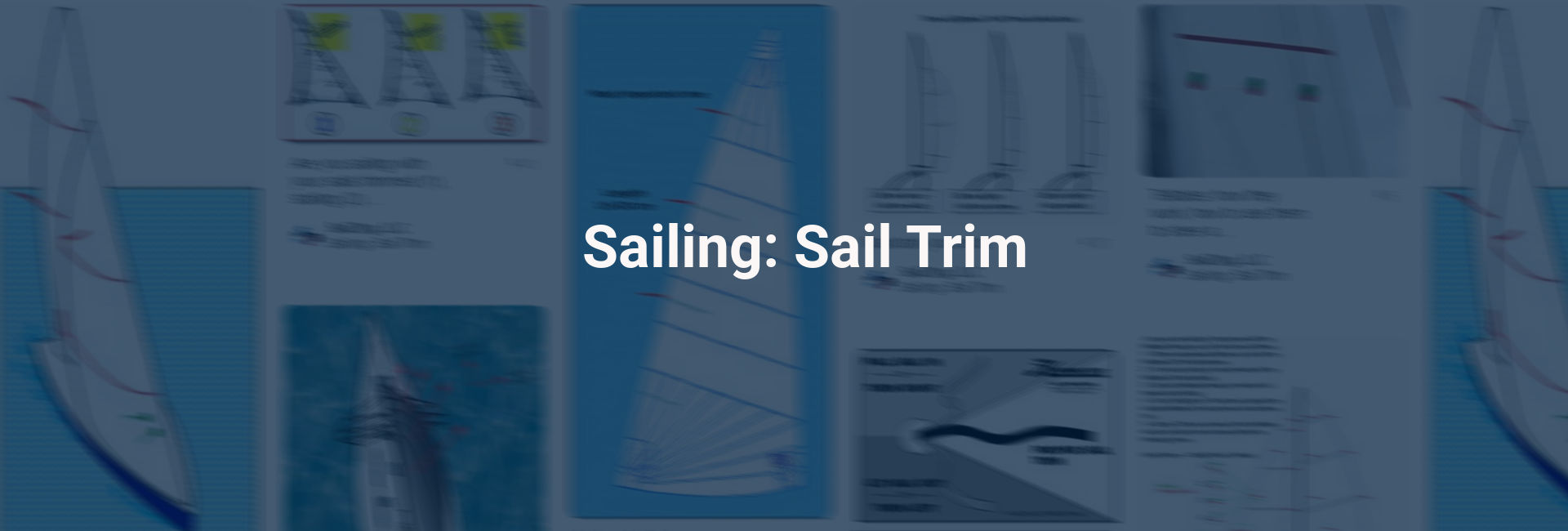
Sail Trim Board

Olympians Share C-Scow Race Course Notes – ILYA Championships
Leave a comment cancel reply.
You must be logged in to post a comment.
This site uses Akismet to reduce spam. Learn how your comment data is processed .
Insert/edit link
Enter the destination URL
Or link to existing content

How Often Do Sailboats Capsize: A Comprehensive Guide

Table of Contents

Introduction

1. Understanding Sailboat Stability
Before we dive into the topic of sailboat capsizing, it’s essential to grasp the concept of sailboat stability. Sailboats rely on a delicate balance between buoyancy, the shape of their hulls, and the distribution of weight. This equilibrium ensures that the boat remains upright and maintains its stability while maneuvering through water.
2. Factors Contributing to Sailboat Capsizing
Several factors can contribute to sailboat capsizing. Understanding these factors will help sailors make informed decisions to minimize the risk of capsizing incidents.
Weather Conditions
Adverse weather conditions, such as strong winds, high waves, and sudden storms, pose a significant risk to sailboats. Powerful gusts can exert excessive force on the sails, causing the boat to tip over or capsize. It’s crucial for sailors to monitor weather forecasts and avoid venturing into hazardous conditions.
Design and Stability Characteristics
The design and stability characteristics of a sailboat play a crucial role in its resistance to capsizing. Factors such as hull shape, keel design, and ballast contribute to a boat’s stability. Sailboats with deep keels and a low center of gravity are generally more stable and less prone to capsizing.
Improper Handling and Operator Error
Inexperienced sailors or those who fail to adhere to proper handling techniques are at a higher risk of capsizing their sailboats. Incorrect sail trim, excessive heeling, abrupt maneuvers, or overloading the boat can destabilize the vessel, leading to a capsize. It is essential for sailors to receive proper training and practice good seamanship.
3. Statistics on Sailboat Capsizing
To gain a better understanding of the frequency of sailboat capsizing, let’s explore some relevant statistics.
Global Incident Rates
Accurate global incident rates for sailboat capsizing are challenging to determine due to underreporting and varying definitions of “capsizing.” However, it is evident that capsizing incidents occur across different bodies of water worldwide.
Types of Sailboats Most Prone to Capsizing
Certain types of sailboats are more susceptible to capsizing than others. Small, lightweight dinghies and high-performance racing sailboats are more likely to capsize due to their design and the nature of their intended use. Larger cruising sailboats with keels and more stability tend to have a lower risk of capsizing.
Capsizing Incidents and Fatalities
While the majority of sailboat capsizing incidents do not result in fatalities, it is crucial to prioritize safety and minimize the risks involved. Fatalities can occur in extreme weather conditions or when proper safety measures are not followed.
4. Preventive Measures and Safety Tips
To reduce the likelihood of sailboat capsizing and ensure a safe sailing experience, consider the following preventive measures and safety tips:
Checking Weather Conditions
Always check weather forecasts before setting sail. Avoid venturing into adverse weather conditions, such as high winds or storms. Stay informed and have a backup plan if conditions worsen unexpectedly.
Proper Boat Maintenance and Rigging
Regular maintenance of your sailboat is essential for its seaworthiness. Inspect the rigging, sails, and hull for any signs of wear or damage. Ensure that all components are properly rigged and in good working condition.
Adequate Training and Experience
Obtain adequate training and gain experience before setting out on the open water. Learn the basics of sailing, including boat handling, navigation, and understanding weather patterns. Consider taking sailing courses or joining a sailing club to enhance your skills.
Safety Equipment and Emergency Preparedness
Equip your sailboat with essential safety equipment, including life jackets, flares, a first aid kit, and a functioning VHF radio. Familiarize yourself with emergency procedures and ensure that everyone on board knows how to use the safety equipment.
Understanding Sailboat Limits and Operating within Them
Every sailboat has its limits. Understand the capabilities and limitations of your boat, especially regarding wind conditions and weight capacity. Avoid overloading the boat and be mindful of the sailboat’s stability characteristics.
5. Conclusion
Sailboat capsizing is a concern for sailors worldwide. However, with proper knowledge, preparation, and adherence to safety guidelines, the risk of capsizing incidents can be significantly reduced. Understanding sailboat stability, recognizing contributing factors, and implementing preventive measures will ensure a safer and more enjoyable sailing experience for all enthusiasts.
Frequently Asked Questions (FAQs)
1. is capsizing a common occurrence for sailboats.
Capsizing incidents are relatively rare, especially when considering the vast number of sailboats worldwide. However, it is crucial to prioritize safety and take measures to minimize the risk of capsizing.
2. Are smaller sailboats more likely to capsize?
Yes, smaller sailboats, such as dinghies, tend to be more prone to capsizing due to their lightweight construction and design characteristics. However, proper handling and adherence to safety guidelines can mitigate the risk.
3. Can a sailboat capsize in calm weather conditions?
While capsizing is more commonly associated with adverse weather conditions, it is possible for a sailboat to capsize even in calm weather. Improper handling or operator error can destabilize the boat, leading to a capsize.
4. What should I do if my sailboat capsizes?
If your sailboat capsizes, remain calm and follow proper safety procedures. Stay with the boat, as it provides flotation. Signal for help if needed and follow appropriate rescue techniques.
5. Are there any specialized courses for learning how to prevent sailboat capsizing?
Yes, there are various sailing courses available that focus on safety and preventing capsizing incidents. These courses cover topics such as seamanship, boat handling techniques, and understanding weather conditions.
In conclusion, understanding the factors contributing to sailboat capsizing, maintaining proper sailboat stability, and following preventive measures are key to enjoying a safe and adventurous sailing experience. While sailboat capsizing incidents may occur, they can be minimized through knowledge, experience, and preparedness. By checking weather conditions, maintaining the sailboat, receiving adequate training, equipping with safety gear, and understanding the boat’s limits, sailors can navigate the waters with confidence. Remember, safety should always be a top priority to ensure a memorable and incident-free sailing journey.
Mark Alexander Thompson
Mark Alexander Thompson is a seasoned sailor with over five years of experience in the boating and yachting industry. He is passionate about sailing and shares his knowledge and expertise through his articles on the sailing blog sailingbetter.com. In his free time, Mark enjoys exploring new waters and testing the limits of his sailing skills. With his in-depth understanding of the sport and commitment to improving the sailing experience for others, Mark is a valuable contributor to the sailing community.
Recent Posts
Lagoon vs Leopard Catamaran: Which Sailboat Is Right for You?
Introduction When it comes to cruising on the open waters, catamarans have gained immense popularity for their stability, space, and comfort. Two of the leading catamaran manufacturers, Lagoon and...
How to Determine Sailboat Weight: A Comprehensive Guide
Introduction Sailing is a thrilling and adventurous activity that has captivated humans for centuries. Whether you are a seasoned sailor or a novice looking to set sail for the first time,...
There are two main causes of capsizing. One of them is the result of the wind overpowering the boat and its crew so that the boat heels excessively until it fills with water and capsizes to leeward. The other is normally the result of a crewing error in strong winds, usually on a downwind course, so that the boat becomes unbalanced and capsizes, generally to windward. Although on the whole one-designs allow a fairly large margin for error on the part of the crew, racing one-designs don't, as they are more sensitive owing to their relatively larger sail area and lighter hulls.
Capsizing is an ever-present possibility in all unballasted boats, and it is important that you know how to deal with it. You need to be familiar with the correct righting techniques which should form part of your basic seamanship training. As a beginner you would be well advised to deliberately capsize your boat , but under supervision, to learn how to right it; your confidcncc will be improved if you have already capsized in a controlled situation.
All one-designs havesomebuoyancy sothere is no danger that they will sink, provided that the buoyancy has been checked before launching. The amount of buoyancy is important (see pages 46—7): too much can cause the boat to blow away on its side or float so high in the water that the upturned centreboard is out of reach. If you buy a new boat, capsize it in shallow water to determine its behavior so that you can adapt your righting techniques accordingly. The method you use will depend to some extent on the circumstances of the capsize and the type of boat.
Before the development of the scoop method (shown right), a crew trying to right their boat had to swim it around head-to-wind so that it would not blow over again as soon as it was righted; alternatively, they sometimes found they had to lower the sails before attempting to bring the boat upright. The scoop method, however, has the advantage of permitting a boat to be righted irrespective of its position relative to the wind as the crew is already aboard to act as ballast. Some more complex capsizes will require modifications of the scoop method or even different techniques (see pages 88—9).
Whatever the circumstances of the capsize, the crew should stay with the boat. It is much more visible to a rescue launch than a lone swimmer and the shore may well be further away than it appears.
Righting a boat — scoop method
In this method, the crew is scooped up inside the boat as it is brought upright by the helmsman who stands on the centerboard and pulls on the jib sheet. Because the crew is already aboard when the boat comes upright, he acts as ballast and prevents the boat from capsizing again immediately after righting When the boat capsizes to windward, the crew must wait for the sail to swing over to the other side of the boat before leaning over to help the helmsman aboard. Both helmsman and crew must understand their respective tasks and carry them out accordingly. The crew must also take care not to pull on the boat before the helmsman has climbed onto the centerboard or it may invert on top of him. Lightweight racing boats are particularly prone to inversion. The techniques for dealing with an inverted boat are described on page 89.

1 Crew checks that the centerboard is in the fully down position. He then sorts out the mainsheet while the helmsman swims to the transom and checks the rudder fitting is still in place.
4 The crew lies down in the boat, holding onto the toe straps or the thwarts, while the helmsman climbs onto the centerboard, using the jib sheet as a lever if necessary.

Position of the helmsman
The helmsman must take care to stand at the root of the centerboard, as close to the boat as possible, to prevent it breaking under his weight. He must be ready to let go of the jib sheet and grasp the side decking to lever himself aboard the boat as it comes upright. Throughout the righting sequence both helmsman and crew should talk to each other so that they know what is happening.

2 The crew holds the transom steady while the helmsman, taking the mainsheet over the rudder, swims to the centerboard. using the mainsheet as a lifeline until he gets there

3 When the helmsman has reached the centerboard and grasped it. the crew swims around to the inside of the boat, sorts out the upper jib sheet and throws it over to the helmsman.

5 The helmsman, after checking that the crew is ready, stands on the centerboard as close to the boat as possible and starts to pull on the jib sheet to begin the righting movement.
6 The helmsman continues to pull on the jib sheet until the boat is nearly upright and scrambles aboard over the side decking. Both crew members then prepare the boat to sail off immediately.

2 She grabs the jib sheet and scrambles out onto the centerboard. standing as close to the root of the board as possible.
3 The helmsman grasps the lower toe straps and is scooped aboard as the crew rights the boat by pulling on the jib sheet.
Righting a trapeze boat
In racing boats if the crew is not out on the trapeze you can use the normal righting method. However, for the occasions when the crew is trapezing. both helmsman and crew have to learn how to react very quickly in the event of capsize. They must perfect a righting technique which is rapid and efficient. The first priority is for the crew to unhook and climb out on the centerboard as rapidly as possible to prevent the boat from inverting. The helmsman performs the role normally carried out by the crew and is scooped up into the boat in the usual way.
1 The trapezing crew moves her weight back onto the gunwale as the boat capsizes and unhooks rapidly from the trapeze.

2 He swings himself onto the centerboard. and rights the boat by pulling on the gunwale.
1 As the sail starts to hit the water, the helmsman should grasp the upper gunwale and begin to lever himself up. ready to climb over the side as quickly as possible.
Righting single-handed
Single-handed boats can be difficult to right as the center-board floats high in the water and the boat can blow away from you. If you sail single-handed you should develop a technique whereby you do not actually fall in the water, but start to scramble up over the gunwale as the sail hits the water, ready to right it by standing on the centerboard and pulling on the gunwale. If you do fall in the water, the boat can sometimes be righted by grasping the bow and sinking it so that the boat rotates to its normal floating position.

2 Crew then bundles spinnaker into pouch (or chute) before starting normal righting sequence the other presses down hard on the stern to break the air seal. Once in the normal capsize position, the boat is righted in the usual way. If the centcrboard has not retracted the job is made much simpler because one person can use it as a lever. It is important to make sure the jib sheet is brought over forward of the centerboard to prevent it slipping backwards.
Righting when a spinnaker is set
Righting an inverted boat
If the crew are slow to react to a capsize, the boat can easily invert. The air is then trapped under the hull and the boat forms a seal with the water which can be difficult to break. The method you use to right an inverted boat will depend on the position of the centerboard. If you capsize with the centerboard fully retracted, or if it retracts during the capsize, recovery will be made harder because you do not have it to use as a lever to right the boat. Whatever the method, the boat should be righted so that the mast comes up towards the wind. This will then make recovery from the normal capsize position much easier, and will prevent the boat from capsizing again. It is best if one person pulls on the jib sheet, standing on the gunwale, while
If you have the misfortune to capsize your boat with the spinnaker set. the first task is to release one corner of the spinnaker so that it doesn't act as a sea anchor. The next job is to get the spinnaker down. If the boat inverts with the spinnaker set, bring it up to the normal capsized position before starting to right it in the usual way.
1 Crew finds one corner of the spinnaker and undoes the sheet from the clew.

3 Both helmsman and crew continue pulling until boat gradually turns over until it lies in normal capsized position.
4 Crew climbs onto centerboard aided by helmsman and righting sequence (see previous page) is followed in usual way.
1 Helmsman finds a jib sheet from inside boat. Helmsman and crew swim to other side of boat and crew climbs onto gunwale and grasps centerboard.
2 With helmsman and crew both kneeling on boat, crew starts to pull on centerboard while helmsman pulls on jib sheet

If you capsize in shallow water your mast may dig into the mud so that you have to be towed off. Make sure that the righting line from the towing boat is clipped or tied to the shroud and taken over the hull (below). Where possible, arrange for the boat to be pulled upright against the wind (right).

Every one-design should have a painter attached at the mast and led through a bow fitting. If a single boat is towed in calm conditions it can be fastened alongside the towing boat (right)
or towed behind the rescue boat. If more than one boat is towed, each one can be attached with a rolling hitch (see page 532) to a rope trailed from the rescue boat.

Crew under sail
Crew under hull
There is plenty of air inside the hull. Swim to an outer edge and push yourself under the side decking to get out
Crew trapped
Now and again, as the result of a capsize, the crew gets trapped either under the sail or in the inverted hull. Neither situation is dangerous although it can be alarming if you do not know the correct procedure to deal with it.
Crew beneath sail Push your hand up and make an air pocket in the sail. Then, keeping one hand above your head to push the sail, work your way,using a seamline to guide you, to the outside edge.
Continue reading here: Man overboard
Was this article helpful?
Recommended Programs

Myboatplans 518 Boat Plans
Related Posts
- Broad Reach With Tide - Sailing Procedures
- Reefing - Sailing Procedures
- Simple capsize drill - Sailing Techniques
- Basic Rescue Tips for Water
- Catamarans - Sailing Procedures
- Changing course - Sailing Procedures
Readers' Questions
Can a sailboat capsize?
Yes, a sailboat can capsize. When a sailboat capsizes, it means that it overturns or flips upside down. This can happen due to various factors such as strong winds, improper sail handling, excessive weight on one side, or by hitting a large wave or obstruction. Capsize can be dangerous and may lead to injuries or even the sinking of the boat if not handled properly. Sailors are trained to prevent capsize and to know how to respond if it happens.
What should you do if your boat capsizes and floats away?
If your boat capsizes and floats away, it is important to stay calm and act swiftly. Here are the steps you should take: Stay with the boat: If possible, try to stay near the capsized boat because it can provide you with some buoyancy and increase your chances of being spotted by rescuers. Cling onto the boat or any floating debris. Assess your supplies: Check if you have any floating supplies near you such as life jackets, oars, or emergency kits. These can provide assistance until help arrives. Signal for help: If there are other boats or people nearby, make yourself visible by waving your arms, shouting, or using any signaling equipment you have. If you have a whistle or flare, use them to attract attention. Stay visible: If no immediate help is available, focus on remaining visible. If you have bright-colored clothing, put it on or use it as a flag. Try to paddle or swim closer to the shore or any potentially safer location. Conserve energy: After the initial panic, try to conserve your energy. Avoid excessive swimming or thrashing around, as it can increase fatigue and hypothermia risks. Instead, tread water or float to preserve energy. Use the HELP position: If you are alone, use the Heat Escape Lessening Position (HELP) technique to reduce heat loss. It involves crossing your arms tightly against your chest while drawing your knees up towards your body. This position helps reduce heat loss from the armpits, chest, and groin. Stay positive and hydrated: Mental resilience is crucial in survival situations. Keep a positive mindset by focusing on positive thoughts or engaging in mental exercises. If you have access to drinking water, consume small amounts periodically to stay hydrated. Remember, the best course of action is to prevent a situation like this from happening by equipping yourself with proper safety measures, such as wearing life jackets, knowing how to swim, and being familiar with boating safety protocols.
What causes a boat to capsize?
A boat can capsize for a variety of reasons, including strong winds, waves, improper weight distribution, or an uneven hull or center of gravity. Other causes may include an overloaded boat, a collision, or striking a submerged object. Prolonged exposure to wind, waves, and excessive speed can also cause a boat to capsize.
Better Sailing
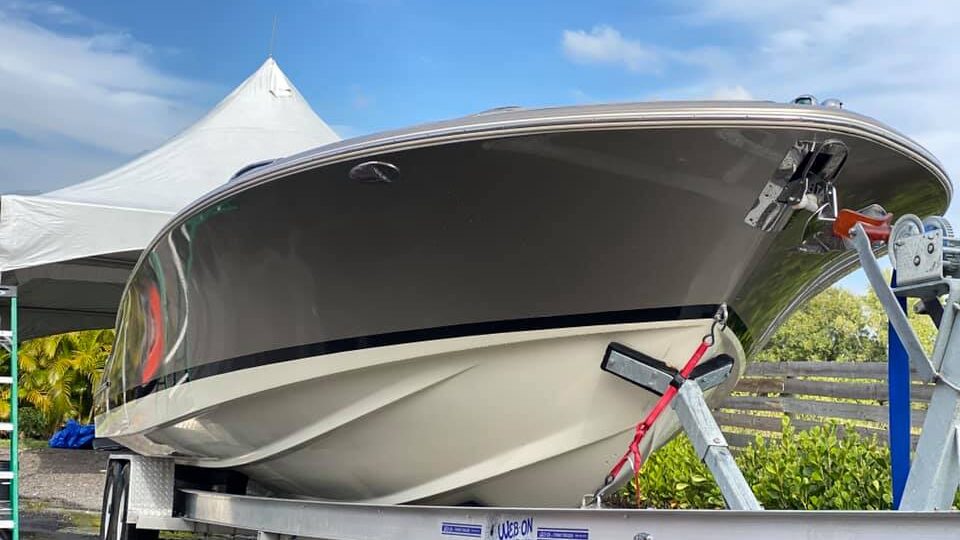
Painting Gelcoat: How To
Boats are usually manufactured with either one of two materials; fiberglass or aluminum . The outer surface of a fiberglass manufactured boat is usually coated with a special resin called Gelcoat.
Today, Gelcoat is most common as a surface finisher and known for its ability to improve a product’s appearance; products such as the surface of a boat/sailboat hull. Before the manufacturing of this resin, a research group by Dr. Carothers at DuPont developed unsaturated polyester resins (UPR) in the late 1920s. Pigmented Gelcoat was being offered for sale by the early 1950s.
Gelcoat is a substance used to provide a premium finish on the visible surface of a fiber-reinforced composite. It is used in a bunch of construction and abrasive prevention applications and quite evident in the making of boats. This material is a liquid that hardens to form a thick layer. It is thicker than paint and is designed to protect the underlying fiberglass from scratches and moisture damage. It also gives a smooth, shiny appearance to the hull of the boat. Mostly, Gelcoat is applied from the factory.
A generic mistake most people make about Gelcoat is that they give it the same treatment as paint. They try to be tidy and perfect with the coating. This material, in turn, provides the surface with streaks and brush lines because it is applied too thinly, like paint.
The Application of Gelcoat is Quite Easy;
- You examine the surface that Gelcoat is to be applied on, and if the surface is fiberglass or polyester resin, the application will be relatively easy. If it has been painted before, the paint will need to be removed before applying Gelcoat.
- Next, you clean the surface. Acetone, as it is the most commonly used, is the go-to cleaning solvent for boats or metal surfaces.
- Then, you load your brush with Gelcoat, and when it comes in contact with the mold, you spread, dab or dot. Exotherm will build up when the gel coats in a large mass, and that will make the Gelcoat dry up way too quickly.
- After it is dried up, you sand the lines and wax them to give a smooth surface.
When deciding what materials to use, there are four key things to consider;
Repairability
- Maintenance
As stated earlier, Gelcoat is thicker than paint by ⅛ of an inch (which is paper-thin). Gelcoat has more of an advantage and takes the cake in comparison to paint on the durability stand. If a boat/sailboat with Gelcoat applied on it is scratched, you can sand it, buff it up, and it looks just brand new, unlike a painted boat that will show a scratch no matter how little.
Another test for durability is the chemical test–how well they react to chemicals; flammable liquids you would typically see on a boat, such as gasoline, diesel, etc. Both Gelcoat and paint react well to them, but Gelcoat surface is more equipped in that area than a painted surface. Also, when we talk of durability, we speak of how long it will last and how easily the color will wear off. Gelcoat fades easier than paint does. Gelcoat starts to wear off pretty easily as soon as the sun hits it. When new Gelcoat is placed over an old one, the difference is clear, but for paint, the new and old one will match each other.
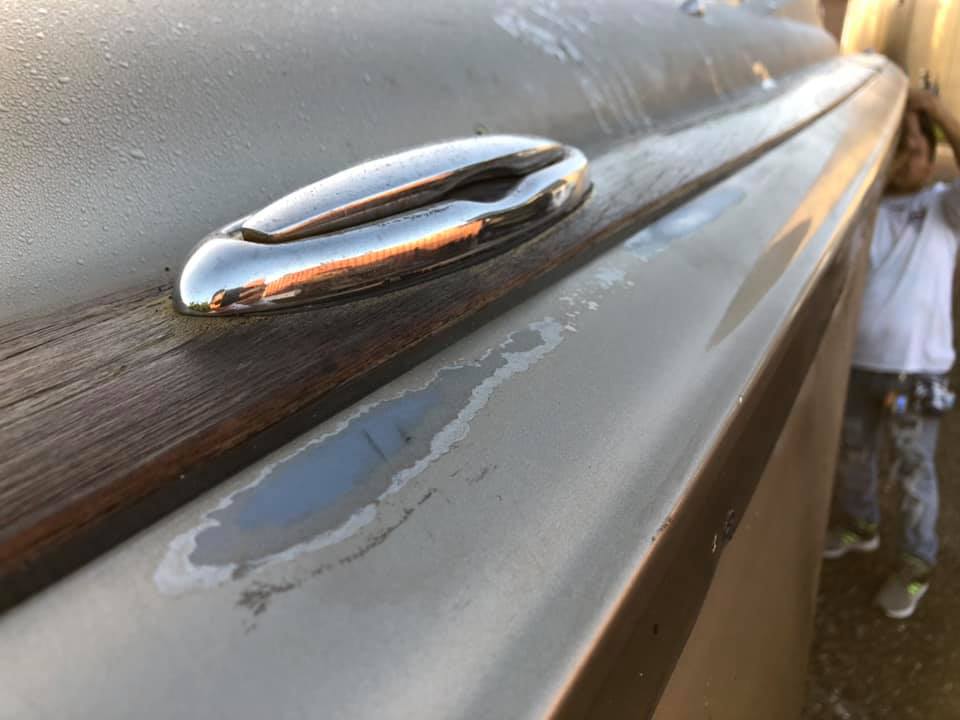
>>Also Read: How Long Do Sailboats Last?
Gelcoat is a lot shiny when applied on smaller surfaces with a stick or brush as it requires no equipment for application. But for larger areas, Gelcoat needs to be sprayed. Paint, on the other hand, is easier to use in smaller areas and would look perfect if sprayed. For larger areas, there is an advantage of rolling and tipping it, especially for those working in garages. Rolling and tipping look better than spraying.
Is it easy to fix? When repairing your boat, the first part of finishing is the color matching process. Gelcoat is tricky for newcomers in the game and could be frustrating. But with paint, it is easier to match colors.
The longevity of Gelcoat is one of its biggest advantages. Gelcoat may last up to 20 years without any need for a significant repair, but the paint will most likely require any least one within the same duration of 20 years.
To keep up with the appearance of the boat, there are a few tricks one can do, especially since Gelcoat wears off easily.
- You can apply marine wax quarterly to protect it from sun and contaminants and also keep it glossy and shiny.
- No matter how dirty the boat may or may not be, it is advisable to bathe every inch of fiberglass with freshwater after every trip in saltwater. If not, when the saltwater dries up, it leaves crystals behind. These crystals intensify the sun rays and ultraviolet light. This, in the end, will lead to the breakdown of the material (Gelcoat) applied to the fiberglass. Also, UV is a big enemy of wax, a composition in Gelcoat.
Now, it’s safe to say that with time and a bit of wearing off, a boat owner’s preference may change. After you might have cleaned, smoothed, and waxed the boat, it looks good for a while, till it starts to lose its sleekness and color. The boat owner may prefer using paint instead of Gelcoat or want to apply more Gelcoat to the older wearing-off Gelcoat. These options are easily achievable with the following tips. If the Gelcoat is in good condition with no corrosion or major cracking, the job is rather unambiguous– you tidy the surface, use an epoxy primer, sand the primer, dust off the sanding residue, and lay the topcoat. But if there is a little crack, corrosion, or oil spills, you should do the following:
How To Paint Over Gelcoat
Firstly, you decide if you would rather a professional do the job or you, with little or no experience. After making your decision, you clean your boat thoroughly with Acetone, preferably. It is advisable to use soaps specifically made for boats as dishwashing liquids may be too hard on the wax and lead to its breakdown. This cheap hull cleaner will do the job just fine.
Secondly, you mark the cracked spots and apply tapes to them. Then, you remove the coat that is not bonding with the others to give it a smooth surface. After removing the coat, you apply a thin coat of epoxy putty to fill the surface as it dries quickly and is easier to sand. Subsequently, you apply a high build primer and a coat or two of finish primer after the cracks have been filled. The sanding of the finish primer should be done with a 300-420 grit sandpaper. After the sanding, clean the residue. Once cleaned, apply few coats to finish.
It is advisable to note that when painting, there are a few things to consider, which include; having the skills to work on a boat, the best time to work on the boat, how long it will take, the tools for the job, availability of the equipment, among other things. When these things are in order, revamping a boat will be a piece of cake.
Peter is the editor of Better Sailing. He has sailed for countless hours and has maintained his own boats and sailboats for years. After years of trial and error, he decided to start this website to share the knowledge.
Related Posts
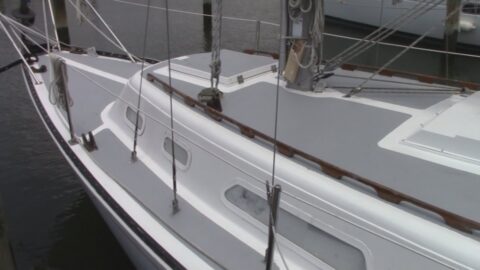
Best Non Skid Boat Deck Paints
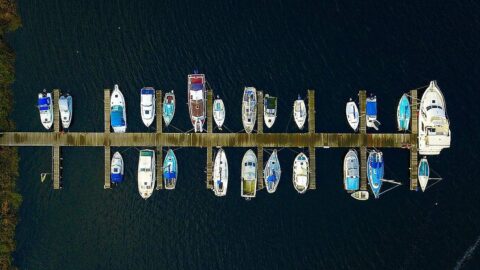
Worst Boat Brands You Should Avoid
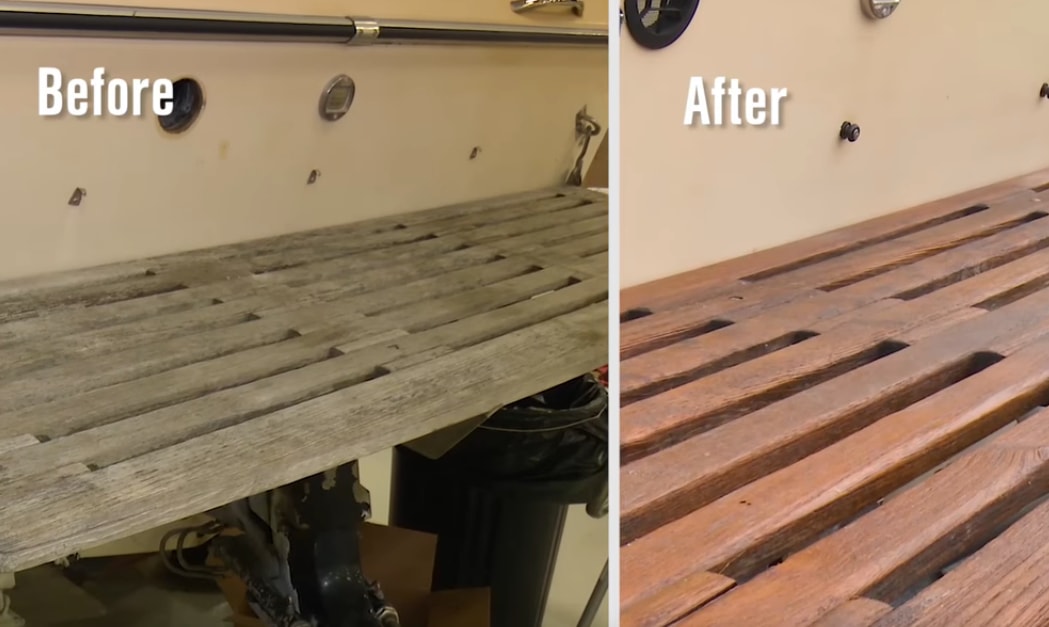
How to Restore Teak on a Boat
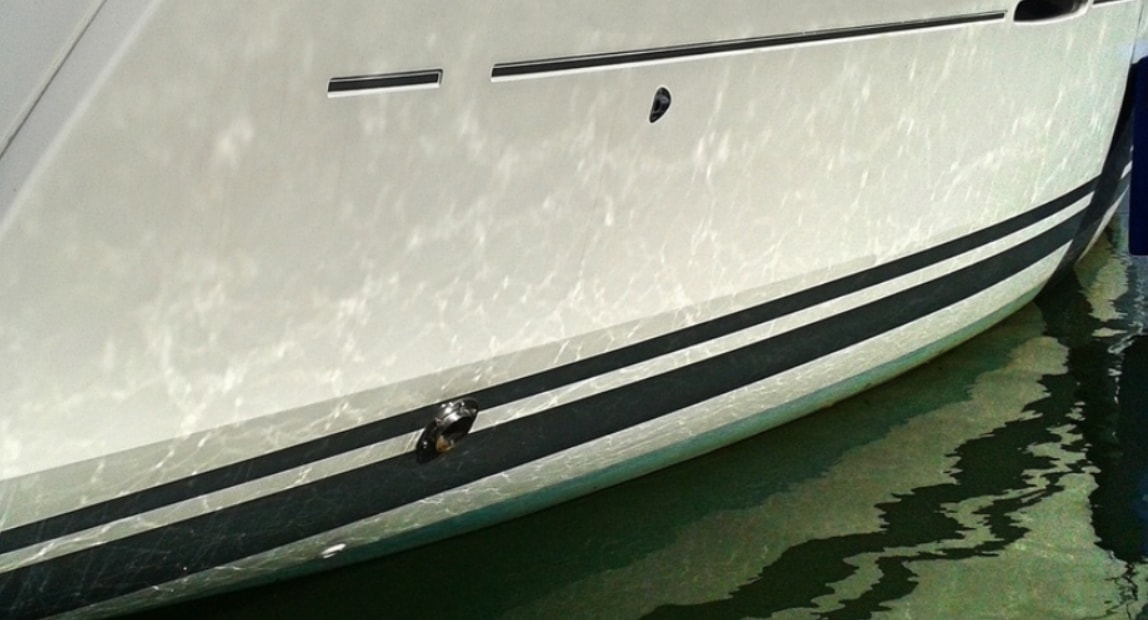
How to Remove Pinstripes From Your Boat
- Buyer's Guide
- Destinations
- Sailing Info
Hit enter to search or ESC to close.
- Скидки дня
- Справка и помощь
- Адрес доставки Идет загрузка... Ошибка: повторите попытку ОК
- Продажи
- Список отслеживания Развернуть список отслеживаемых товаров Идет загрузка... Войдите в систему , чтобы просмотреть свои сведения о пользователе
- Краткий обзор
- Недавно просмотренные
- Ставки/предложения
- Список отслеживания
- История покупок
- Купить опять
- Объявления о товарах
- Сохраненные запросы поиска
- Сохраненные продавцы
- Сообщения
- Уведомление
- Развернуть корзину Идет загрузка... Произошла ошибка. Чтобы узнать подробнее, посмотрите корзину.
Oops! Looks like we're having trouble connecting to our server.
Refresh your browser window to try again.
Coast Guard suspends search for 3 missing boaters near Seward
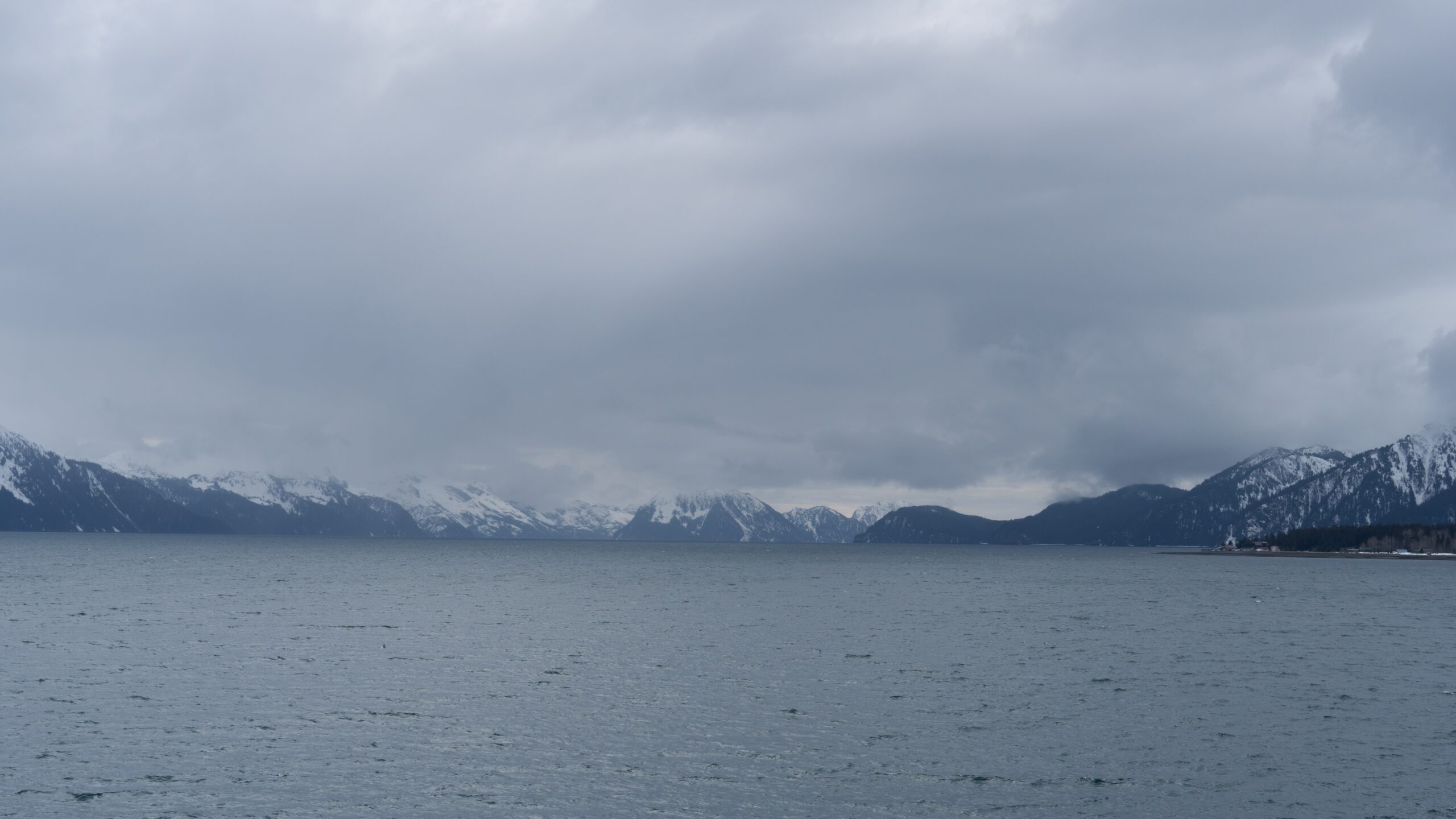
The U.S. Coast Guard on Thursday suspended its search for three people who remain missing after their boat capsized near Seward. A fourth person who was on the boat was found dead, according to Alaska State Troopers.
Troopers identified the individual as 29-year-old Hayden Green from Soldotna. Troopers have also identified two of the missing boaters as 60-year-old Seward resident Joshua Green and 29-year-old Anchorage resident Caleb Green. Troopers said the third missing boater is an adult female whose identity will be made public after next of kin is notified.
“We offer our deepest condolences to the loved ones impacted by this tragedy,” Cmdr. Chris Svencer, the Coast Guard’s mission coordinator for the search, said in a statement .
Troopers said the group left Seward on Tuesday in a 22-foot Hewestcraft boat “but could not return to Seward due to poor sea conditions and weather.” Coast Guard watchstanders received a distress call from the boat at 5:30 a.m. Wednesday reporting it was taking on water, according to troopers.
The Coast Guard sent an MH-60 Jayhawk helicopter from Kodiak to the site, Lt. Cmdr. Mike Salerno said in a prepared statement. It arrived around 9:50 a.m. Wednesday.
“They located the capsized vessel, and a nearby good Samaritan arrived on scene as well and recovered one unresponsive individual with no signs of life from the water,” he said.
The good Samaritan vessel, Skana, took the person to Seward where they were transferred to emergency medical care. The Coast Guard also sent an HC-130 Hercules airplane and U.S. Coast Guard Cutter Naushon to the site to search for the remaining people.
Salerno said he could not immediately provide the reason for suspending the search.
In its statement, the Coast Guard said crews had searched about 95 square miles for a combined nine hours. There were 20 mph winds with gusts up to 30 mph, 12-foot seas and 10-mile visibility during the incident.
According to a dispatch from state troopers Thursday afternoon, the Alaska Dive, Search, Rescue and Recovery Team, a non-profit organization, is working to locate the three missing people.
This story has been updated.
Jamie Diep, KBBI - Homer
Related articles more from author, recapping the 33rd legislature | alaska insight, many alaska king salmon stocks up for endangered species act review after group’s petition, anthony pisano sentenced to 300 years in spenard triple homicide.

- Entertainment
- Rex Reed Reviews
- Awards Shows
- Climate Change
- Restaurants
- Gift Guides
- Business of Art
- Nightlife & Dining
- About Observer
- Advertise With Us
On the Dot: Vienna’s Albertina Celebrates Roy Lichtenstein’s Centennial
Amidst a resurgence of interest in comics and the transformative impact of digital mediums, dorothy lichtenstein and jack cowart envision an audience engaging with lichtenstein's art on their own terms..

“I don’t care.” These words uttered by a woman with striking blue hair command attention. Her vivid crimson lips contrast sharply, directing the gaze to her face and amplifying the emotional depth of the scene. With her mouth agape and eyes shut, the weight of stress etches her features, massive tears cascading down her cheeks. Her face and a hand teetering on the brink of submersion beneath stylized waves.
Sign Up For Our Daily Newsletter
Thank you for signing up!
By clicking submit, you agree to our <a rel="noreferrer" href="http://observermedia.com/terms">terms of service</a> and acknowledge we may use your information to send you emails, product samples, and promotions on this website and other properties. You can opt out anytime.
“I don’t care. I’d rather sink than call Brad for help,” the drowning woman proclaims, embracing her fate. Whether the woman said it with anger, defiance or resignation, the painting’s viewer can only guess.
Drowning Girl , an exemplary piece symbolic of the Pop Art movement, holds a prominent place in Roy Lichtenstein ’s oeuvre. Acquired by New York’s Museum of Modern Art in 1971, this 1963 painting, rendered in oil and synthetic polymer paint on canvas, is now on show at an Albertina retrospective, which runs through July 14.
Roy Lichtenstein, a luminary of the Pop Art movement alongside Andy Warhol, would have celebrated his hundredth birthday last October . His legacy reverberates through the annals of 20th-century art history, leaving a lasting mark on the creative landscape.

At the heart of Pop Art, Lichtenstein adeptly appropriated and reimagined iconic symbols, from Mickey Mouse to love and war comics, to popular advertising motifs. Through his masterful reinterpretations, he challenged conventional notions of high and low culture, inviting viewers to reconsider the significance of everyday imagery in the realm of art.
His distinctive style, characterized by the utilization of Ben-Day dots, infused these familiar images with irony, challenging societal constructs of femininity and masculinity entrenched within the post-war consumer landscape. His artworks served as a poignant commentary on the burgeoning American women’s, anti-Vietnam, and anti-nuclear movements, reflecting the zeitgeist of the era.
During the inauguration of the exhibition, Albertina director Klaus Albrecht Schröder remarked on Lichtenstein’s art, stating, “In the 1960s, at the height of abstract expressionism, Roy Lichtenstein returned to representational, self-reflective art and, with a lot of irony, broke down the boundaries between high art and everyday culture.”
In addition to his exploration of American visual culture, Lichtenstein delved into meta-artistic realms, crafting pieces that scrutinized the essence of art itself. Through the magnification of brushstrokes and reinterpretation of works by Monet, Picasso, and Matisse, he metamorphosed impressionistic strokes and renowned compositions into simplified yet compelling forms reminiscent of illustrations. This multifaceted approach underscores Lichtenstein’s profound engagement with artistic traditions, reshaping the contours of contemporary art.

From low art to high art
Renowned for cutting out the comic from its source and employing an opaque projector to overlay the initial drawing on his canvas, Lichtenstein would trace the basic image, and then proceed to reinterpret it, selectively removing certain elements whilst accentuating others.
“He was the first to translate a cartoon into a monumental format and thereby do something new in terms of content. He explains the most unartistic thing there is, namely low art of comics, to high art,” says Schröder.
Lichtenstein pondered the ramifications of challenging an audience’s assumptions about comic strips by elevating them to the realm of high art. This transformation countered the very nature of comic strips as disposable commodities.
SEE ALSO: An Exhibition of Sonia Delaunay’s Work Holds a Mirror to a Life Lived in Art
Art historian Tamar Avishai delves into this inquiry in her Lonely Palette podcast episode 27 , examining Lichtenstein’s Oh, All Right from 1964, which fetched $42.6 million at a Christie’s auction in 2010. The pop artist’s depiction of a pouty redhead was formerly in the possession of actor and art collector Steve Martin and American casino magnate Steve Wynn.
“What happens when you take away the punchline and give it back some ambiguity,” she asks, concluding “How brilliant a storyteller Lichtenstein really is, how deft he was at picking the perfect moment of narrative ambiguity.”
Consider Drowning Girl as an example. Originally, her dialogue was, “I don’t care if I have a cramp,” a line condensed by Lichtenstein to the enigmatic “I don’t care.” In Tony Abruzzo’s original strip, her blonde, bewildered boyfriend is portrayed on a capsized boat in the background, implying his fault for the dramatic scene.
“He consistently replicates the speech bubbles; he doesn’t craft new ones. It’s real appropriation. He trims the text down, condenses it, inevitably reaching the core, and it’s always about Brad—yet the rationale remains elusive,” observes Gunhild Bauer, the exhibition’s curator.
Lichtenstein’s cropped version underscores his knack for positioning himself at the narrative center, akin to the pivotal panel of a comic strip. By leaving the story’s beginning and end ambiguous, Lichtenstein invites viewers to engage their imaginations to fill in narrative gaps.

Copycat criticism
Despite acclaim, not everyone viewed Lichtenstein’s work in the same light. His methodology and outcomes often drew accusations of plagiarism. In response to criticism, Lichtenstein contended that he wasn’t simply copying but rather reinterpreting the original content through a different lens.
While cartoonist Art Spiegelman said Lichtenstein did no more or less for comics than Andy Warhol did for soup, Hugo Frey and Jan Baetens offer a contrasting perspective in their essay “Comics Culture and Roy Lichtenstein Revisited: Analyzing a Forgotten Feedback Loop” in volume 42 of Art History , showing that the comics community was looking to benefit from Lichtenstein’s fame. Furthermore, the authors explain that the loop included a strong economic impulse, redirecting comics towards a new, adult readership.
According to Frey and Baetens, popular comic book series underwent a transformation, evolving into elongated paperbacks crafted to emulate the vibrant aesthetics of Pop. This transformation was achieved through the incorporation of pop-themed advertising blurbs, innovative dust jacket designs, and a fresh approach to page layout within the content.
As examples, the authors mention Marvel’s ‘Marvel Collector’s Albums’, published by Lancer Books in the United States, which introduced six distinct paperback volumes inspired by Pop Art, featuring iconic characters such as The Fantastic Four, The Hulk, The Mighty Thor and Daredevil.
Each of their covers employed intense images of the eponymous comic heroes, reminiscent of the core strategy of pop: the magnification of iconic imagery, while also removing or minimizing anything superfluous.
Similarly, the paperback “High Camp Superheroes,” scripted by Jerry Siegel, adopted much of the same pop-inspired style. Penned by the co-creator of Superman, this work was presented by its publisher, Belmont, in 1966 as a boldly innovative production infused with Pop Art allure.
Acknowledging some of the criticizing sentiments expressed by comic creators, Lichtenstein remarked during a speech at the National Cartoonist Society convention in April 1965: “I am honored and very much amazed that you are feeding me instead of stringing me up. I think a good part of the art-world believes I am poking fun at cartooning rather than at art—which is much closer to the truth.”
He also noted that “the only hint of a lawsuit in this connection has come from a fine art source and not from cartoonists.”
Sculptures, more or less
The Albertina retrospective was developed in collaboration with the Roy Lichtenstein Foundation, founded by Dorothy Lichtenstein after her husband’s passing. In 2023, the museum received a substantial donation from the foundation, consisting of 95 Lichtenstein sculpture works, as well as related materials such as studies, collages, and various textile and ceramic projects.
The generous contribution effectively establishes a Lichtenstein sculpture study collection in Europe, paralleling similar donations recently made to the collaboration between the Nasher Sculpture Center and the Dallas Museum of Art.
Both the Albertina and the Foundation endeavored to spotlight Lichtenstein’s lesser-known sculptural works at the centennial exhibition. The showcased brushstroke sculptures have seamlessly joined the Albertina collection. Originating from this generous donation, a towering two-meter-high brushstroke sculpture is currently exhibited at Albertina Klosterneuburg, the museum’s recently revealed third venue dedicated to large-scale modern and contemporary art, inaugurated this April. Within one of its halls and the adjacent garden, the spotlight is squarely focused on sculptures.
Some sculptures featured in the centennial exhibition, crafted from expensive bronze, underwent a painting process that obscured their bronze origins, resulting in a nearly plastic-like appearance and the loss of their three-dimensional essence.
“Only upon physical contact does the coldness of the material reveal its true composition as bronze,” elaborates curator Bauer.
“They metamorphosed into caricatures of sculptures, essentially becoming non-sculptures,” she adds, highlighting Lichtenstein’s inclination to cast only sculptures that had already been sold. Consequently, very few editions remain, with some models left uncased.
Bauer notes that Lichtenstein deviated from the traditional aura associated with a work of art and its material, deliberately manipulating it. “He played with it, making it resemble a cheap, mass-produced object,” the art expert explains. “In doing so, he critiques an aesthetic driven solely by economic considerations, divorcing art from its intrinsic value.”

Lichtenstein beyond the canvas
Amidst the close bond between the Albertina and the Foundation, Dorothy Lichtenstein and the Foundation’s executive director Jack Cowart , an art historian specializing in Henri Matisse and Roy Lichtenstein, attended the exhibition’s opening in Vienna.
Cowart characterizes Lichtenstein as a forward-thinking artist, continuously focused on creating tomorrow’s art without dwelling on the past.
“Roy was always two steps ahead of where he was at the present. Connecting all of his media, he’s more than just a painter. He’s an artist who had all the graphic sensibility in design,” Cowart tells Observer. “But if he’s painting, he’s thinking about making prints. If he’s printmaking, he’s thinking about making objects. He was always going back and forth, and he’s always worked for an aesthetic unity.”
Despite his ambition to create significant art, Lichtenstein remained modest, willing to accept with a simple “I tried” if his work went unappreciated. Cowart paints a nuanced picture of Lichtenstein’s personality, describing him as reserved yet subtly humorous, patient and kind.
“He wasn’t shy, but very reluctant and quiet. He didn’t make jokes, he just made observations.” This demeanor, Cowart believes, aligns with Lichtenstein’s artistic ethos.
Amidst a resurgence of interest in comics and the transformative impact of digital mediums on the art world, Dorothy Lichtenstein and Cowart envision a diverse audience engaging with Lichtenstein’s art on their terms, rejecting the notion of a singular “correct” interpretation.
They hope that Lichtenstein’s legacy will endure, echoing his sentiment: “When the last person cares, turn out the light and go home. You don’t owe me anything.”
“ Roy Lichtenstein: A Centennial Exhibition ” is on view at the Albertina in Vienna through July 14.

- SEE ALSO : Why Defining Exactly Who Is and Isn’t an Artist Matters
We noticed you're using an ad blocker.
We get it: you like to have control of your own internet experience. But advertising revenue helps support our journalism. To read our full stories, please turn off your ad blocker. We'd really appreciate it.
How Do I Whitelist Observer?
Below are steps you can take in order to whitelist Observer.com on your browser:
For Adblock:
Click the AdBlock button on your browser and select Don't run on pages on this domain .
For Adblock Plus on Google Chrome:
Click the AdBlock Plus button on your browser and select Enabled on this site.
For Adblock Plus on Firefox:
Click the AdBlock Plus button on your browser and select Disable on Observer.com.
Nine Egyptians to go on trial in Greece over deadly Pylos shipwreck
In mid-June 2023, more than 500 people died after the fishing boat they boarded capsized.

Athens, Greece – Nine Egyptian men accused of criminal responsibility in the Pylos shipwreck that led to the deaths of more than 550 people on June 14, 2023, will go on trial in Greece on Tuesday.
The accused are alleged to be members of a criminal organisation, facilitating illegal entry into Greece and intentionally causing the shipwreck.
Keep reading
New lawsuit filed against greece on behalf of refugee shipwreck survivors, egyptians accused in pylos shipwreck case deny smuggling, blame greece, migrant boat sinks off turkish aegean coast, killing at least 22 people, ‘he was doing a moral thing’: refugee jailed in greece hopes to be freed.
But they have all stated they were not smugglers or responsible for the shipwreck, claiming instead to be simply trying to reach Europe like the others on board.
Organisations such as Amnesty International and Human Rights Watch have called the trial proceedings rushed and improper.
“The Pylos 9 defendants were unjustly arrested and charged with smuggling offences based on limited and questionable evidence,” Marion Bouchetel, a member of Legal Centre Lesvos, which is defending the accused, told Al Jazeera.
The group has called the trial an instance of the “systematic criminalisation of migrants in Greece”.
If the nine men are convicted, they face several life sentences.
The shipwreck
The Adriana fishing trawler, which was crammed with as many as 750 people, mostly from Egypt, Pakistan, Syria, and Palestine, set sail from Libya on June 9, 2023.
Four days later, passengers started sending out distress calls that the boat had stopped moving. The Greek coastguard, notified by NGOs, the Italian coastguard, and Europe’s border agency Frontex of the location of the ship, reached Adriana late on June 14 night.
In the first hours of June 15, the Adriana capsized.
Survivor testimonies allege that the Hellenic coastguard attempted to tow the boat, causing it to flip over, and that it did not sufficiently act to save the lives of those in the water.
The Hellenic coastguard has denied both of these allegations.
There were 104 survivors.

“Our argument, following the testimonies of the survivors, is that these nine people are not responsible for the sinking at the very least. The coastguard is responsible for the sinking,” said Stefanos Levidis, one of the lead researchers in an investigation into the shipwreck, who will testify as an expert witness for the defence.
Levidis’s group, Forensis, which cross-referenced testimonies from 26 survivors with videos and photographs of the ship, vessel tracking and flight path data, satellite imagery, as well as the logs and testimonies of the captain of the coastguard vessel – concluded that the coastguard was responsible for the sinking as it did not properly mobilise other nearby ships, towed the Adriana, retreated causing waves, and then left those who had been thrown overboard as the ship capsized alone at sea for at least 20 minutes.
A joint Amnesty International and Human Rights Watch report, based on testimonies from representatives of the Hellenic coastguard, the Greek police, and nongovernmental organisations, similarly concluded that the coastguard did not respond to distress calls properly and that allegations about its role in the sinking merited a full investigation.
An investigation in Greece’s naval court into the Hellenic coastguard’s role in the shipwreck has yet to be concluded. The defence team has not been given access to the evidence collected.
The Hellenic coastguard has repeatedly stated that those on board refused assistance before the boat capsized, denying any responsibility for the sinking as it maintains it fulfilled its life-saving duties.
Beyond this, Levidis noted that there are questions about the evidence collected by the Hellenic coastguard after the sinking.
“The process of evidence collection coming from the authorities was lacking, at the very least, if not tampered with,” he said.
The Hellenic coastguard ship PPLS920 was not transmitting data regarding its movements that day.
The optical and thermal cameras on board the ship did not record anything “even though it’s a state-of-the-art, brand-new, very expensive vessel”, said Levidis.
The phones of the survivors that were confiscated after the sinking were lost. They were later found inexplicably more than a month later on a different Hellenic coastguard vessel on the Greek island of Kythira, but were ultimately not examined.
The phones of the coastguard crew were confiscated two months after the incident, and there are several inconsistencies in the bridge logs of the PPLS920 and the captain’s testimony.
“There’s a real risk that these nine survivors could be found guilty on the basis of incomplete and questionable evidence given that the official investigation into the role of the coastguard has not yet been completed,” said Judith Sunderland, associate Europe and Central Asia director at Human Rights Watch. “Credible and meaningful accountability for one of the worst shipwrecks in the Mediterranean needs to include a determination of any liabilities of Greek authorities.”
The case file
The prosecution charges are based largely on testimonies taken from nine survivors.
According to the defence lawyers, these testimonies appear to be “widely copy-pasted from each other”.
“These testimonies not only largely resemble each other but were also taken in questionable circumstances, while the survivors were detained in a warehouse in Kalamata, immediately following their rescue from the deadly shipwreck. All these elements raise serious concern about their reliability and even authenticity,” said Bouchetel of Lesvos Legal Centre.
The Legal Centre Lesvos argues the investigation should have also included communications from the Hellenic coastguard boat, data from nearby planes, and the examination of the mobile phones which the coastguard confiscated from the survivors.
The defence’s request for further evidence to be included in the case was rejected by the interrogator judge, and the case file was closed after six months.
“Despite the mounting evidence of Greece’s responsibility in this tragedy, blame was immediately put on the survivors themselves,” said Bouchetel.
“This reversal of situation is typical of the troubling criminalisation pattern happening in Greece: migrants are unjustly convicted of smuggling offences, often based on limited and questionable evidence, in order to cover up state crimes, violence, and non-rescue by the border authorities.”
From Iceland — Grapevine Events: HAM, Viibra Release Show, Art Book Fair & New Hot Happenings Episode
Grapevine events: ham, viibra release show, art book fair & new hot happenings episode.
Published May 24, 2024

Things truly get heated up on this week’s edition of Hot Happenings, as we have an absolutely fire discussion with Icelandic music industry expert Anna Jóna Dungal. A wearer of many hats in the industry with a rich and varied background, she is notably the OK AGENCY consulting firm, manager of erstwhile Eurovision contenders Celebs, and previously on the Sena Live team.
She recently put on a new fancy hat of project manager at Salurinn Concert House in Kópavogur, a beloved music hall that has raised the bar Iceland’s live music world since the early 2000s. Along with discussing their events and programming, Anna Jóna and hosts Jói and Rex deep dive into the state of live music venues in the capital, the ins and outs of playing the music industry game, and the importance of being able to suck on stage.
If you have lots of spicy thoughts about live music in Iceland, this one will be a scorcher for you!
Head to Apple Podcasts or Spotify to follow the show and catch all the weekly Hot Happenings episodes, out each Thursday!
For more events and happenings, check our picks below and events.grapevine.is . If the weather continues to be like this during the weekend, you might wanna ditch your bedroom and cosy up in Bío Paradís for Draumar, Konur & Brauð instead.

Runs until May 26 — Elliðaárstöð — Free
The Elliðaá river in eastern Reykjavík has a long and coloured history in our fair burg. From the water being harnessed by the now defunct Elliðaárstöð power plant to the urban wildlife reserve of the valley that surrounds it. The exhibition Kindred embraces all of these histories and the area’s many lifeforms to create connections and manifestations with those parts of nature usually unseen and unheard. The exhibition is the MA graduation project of Daria Testoedova. RX

- Reykjavík Art Book Fair
Friday May 24 – Sunday May 25 — 12:00-17:00 — Free
Zines, pamphlets, prints, monographs, and all sorts of art books? The Reykjavík Art Book Fair has it all — from university projects by art students to exclusive one-copy pieces costing 40,000 ISK by established artists. Local and international, Icelandic and immigrant, weird and traditional, the fair offers a whole spectrum of creativity. With the addition of the mobile print studio Brumm Brumm making their screen-printed posters right on the spot, make sure to check it out this weekend. IZ

- Dance Marathon 2024
Saturday May 25 — 11:00 — National Gallery of Iceland — 1.500-15.000 ISK
Why run a marathon when you can dance a marathon? The very word “marathon” brings forth all kinds of assumptions – physical prowess, high endurance, peak performance. At the second annual Dance Marathon, you can fouetté those notions right over the barre cause none of that matters a shake. Held within the cadre of the DansDagar festival, the seven-hour charity event is a space where everybody with any level of physical abilities is welcomed to celebrate the joy of movement. This year’s edition raises funds for SLF, The Benefit Society for Children with Disabilities, because everyone’s moves matter. RX

HAM, Skrattar & Hasar
Saturday May 25 — 19:00 — LEMMY — 7.900 ISK
HAM are considered the godfathers of Icelandic rock music. Every now and then they will invite the younger bands to do a show with them, both to let said youngsters kiss the ring and to hang on to their own relevance. Get thyself to LEMMY for the chance to witness the emergence of Reykjavík’s next fresh and exciting musical pioneers, but also to pay homage to the long lived and experienced on the scene. AJ

Viibra Album Release Show
Sunday May 26 — 21:00 — Harpa (Norðurljós) — 4.900 ISK
Back in 2016, seven flautists were brought together by the one and only Björk to perform on her Utopia tour. Yada yada yada, they’re now called Viibra and they are releasing their self-titled debut album! (Read more on page 28.) Incorporating movement along with their intricate and beautifully chaotic compositions, the group will perform four pieces from their upcoming release, thus proving why the big B kept these musicians in tow for more than five years and multiple tours. With choreography by Margrét Bjarnadóttir, who did Ragnar Kjartansson’s “No Tomorrow,” we expect this show to truly blow you away. RX

Dr. Mads Gilbert Lecture on Gaza 2024
Monday May 27 – 20:00 – Háskólabíó – Free
Wednesday May 29 – 19:30 – Menningarhúsið Hof (Akureyri) – Free
If, like millions of folks around the world, you have been gaping in horror and disbelief at your screens for the past seven months wondering “what the actual fuck is going on and why won’t anyone stop this?” then that makes all of us. On your literal doomscroll, you have very likely encountered Dr. Mads Gilbert, a Norwegian doctor and prominent activist for Palestine who has seen the horrors first-hand. He is now coming to deliver the lecture “Gaza 2024: A catastrophic man-made disaster. What can we do?” in both Reykjavík and Akureyri. And we really, really need to know what we can do. RX
- Anna Jóna Dungal
- hot happenings
- reykjavík events
- thursday roundup
Next: Child Assaulted In Hafnarfjörður
Go travel with Grapevine tried and recommended tours by Grapevine. Fund Grapevine journalism by booking with us.
Subscribe to our newsletter for FREE ! Weekly news + video content from Iceland and some Grapevine Store discounts and give-aways!
Go travel with grapevine..
Tried and recommended tours by Grapevine. Fund Grapevine journalism by booking with us.

Asylum Seekers Evicted In Hafnarfjörður

Tacos Served With A Side Of Jazz

Increased Rates Of Homelessness Anticipated Due To Refugee Policy

Cover Features
Bound By All Things Kinky

Animal Of Iceland: The Midge

Being Black In Iceland: An Interview With Jewells Chambers

Grapevine New Music Picks: Una Torfa, Hipsumhaps, Soffía Björg & More

Icelandic Crossfit Champion Gets Naked

Child Assaulted In Hafnarfjörður
by Jóhannes Bjarkason 17:20

Absentee Voting In The Canary Islands Delayed
by Jóhannes Bjarkason 13:35

Icelandic Police To Carry Tasers
by Iryna Zubenko 16:15

Grapevine Events: Bashar Murad Concert, Skjaldborg & More
by The Reykjavík Grapevine 13:22

Sailor Rescued Following Boat Capsize
by Jóhannes Bjarkason 07:51

Iceland Ranks Second Place The Rainbow Map
by Jóhannes Bjarkason 09:46
Privacy Overview
- My View My View
- Following Following
- Saved Saved
Trial over deadly Med shipwreck opens in Greece amid protests
- Medium Text

Sign up here.
Editing by Karolina Tagaris, Edward McAllister and Alex Richardson
Our Standards: The Thomson Reuters Trust Principles. New Tab , opens new tab
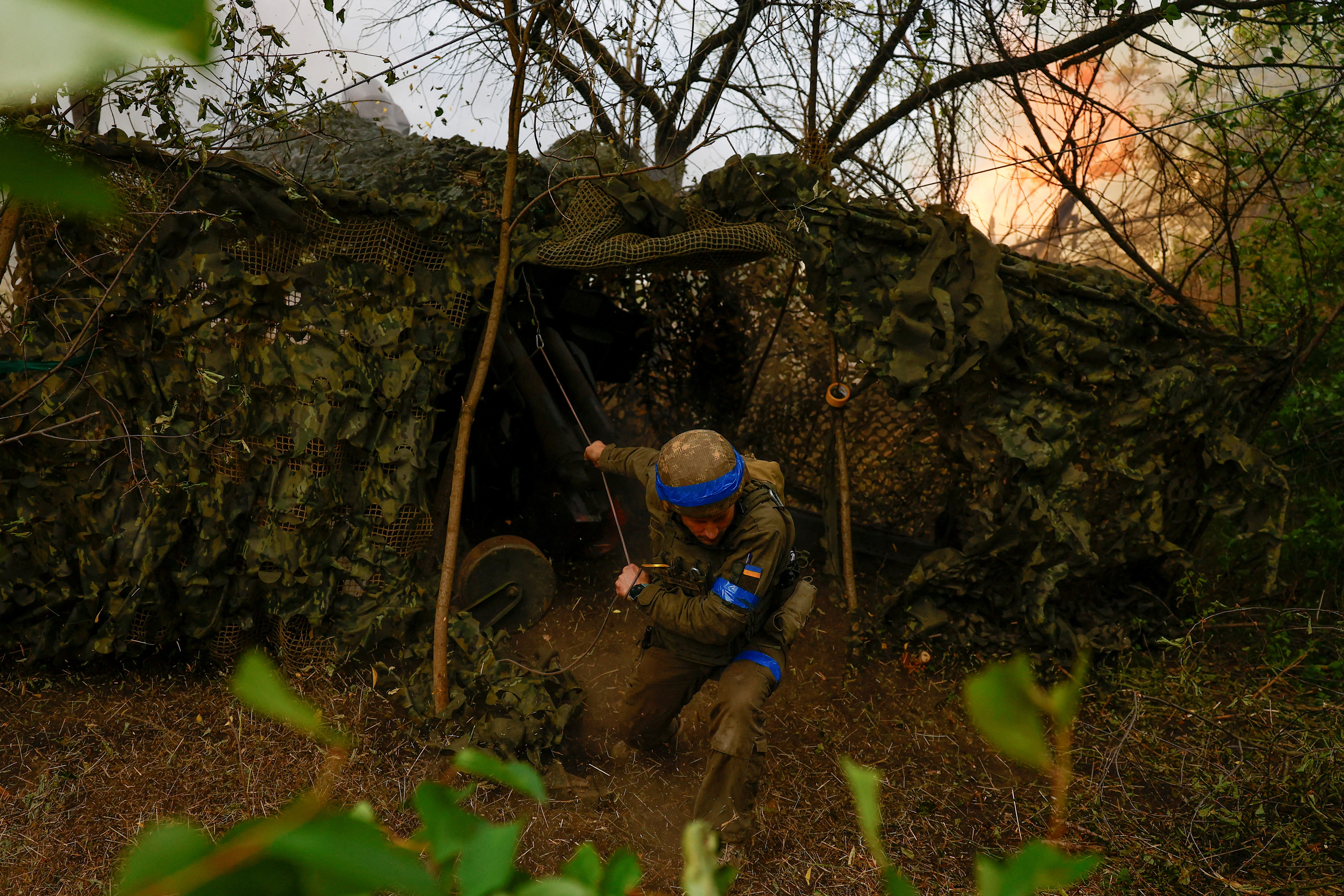
World Chevron

After World Court ruling, Palestinians want action not words
Forced from her home by Israel's seven-month-long Gaza offensive, Salwa al-Masri has little hope her plight will be alleviated by a ruling from the U.N.'s top court ordering Israel to halt its offensive in Rafah.


IMAGES
VIDEO
COMMENTS
Why Capsizes Occur. Capsizing can take place for different reasons, including sudden gusts of wind, choppy seas, or when the captain loses command of the boat. Most often capsizes result from several factors combining forces, like abrupt changes in wind direction, unequal weight distribution among crew members, or improper sail trimming.
If the boat is sinking or the water is too cold, you may need to abandon the vessel and swim for safety. 3. Righting the Capsized Sailboat. Depending on the size of your sailboat, you can right it with the help of your crew. Before attempting this maneuver, you should ensure that the boat's sails are released, and the lines are untangled.
After you have finished with the 600 grit sandpaper, it is time to move on to 800, then 1200. This process is important so you will be painting on as smooth a surface as possible. It is then a good idea to wipe the surfaces of the boat down with a damp cloth to remove any of the dust and flakes of metal/wood.
The Traditional Method. Hence the name; this method is the most common way to recover a capsized boat. Begin by positioning the boat, so the mast is downwind (meaning the bow is pointed into the wind). Then, have one crewman stand on the centerboard (ideally, this crewman should be the heaviest of the bunch).
The first thing you should do when a vessel capsizes is, check the people onboard and make sure that no one is injured. If you made the mistake of not wearing a lifejacket or a PFD, find one and put it on. If you can't put it on, hold onto it and have the other passengers do the same.
The acrylic painting above is the right side of the painting entitled "Over Early!" The boat has capsized because the committee boat, not shown to the left, fired a cannon across the starting line, and….Doc, it's just a jokey painting. "I see. Now let's talk about your last painting before you took up fiction writing.
If you're sailing upwind and get hit by a strong gust, the boat can easily heel over or even capsize to leeward. The same goes for reaching. Especially if the kicker is too tight (laser sailing), your boom can easily hit the water and make the boat capsize. To bring the boat upright again you need to use the centerboard.
Checkout today's Sponsor:Big shout out to TODAY'S SPONSOR: Nobodyhttps://www.youtube.com/channel/UCutyc3toD04gssmbQ1B_EZg↓ ↓ Social media links below ↓ ↓⭐ ...
Capsize drills for (by?) complete idiots. Grant and Sarah head to the lake for a few capsize drills. Come along as they give a few tips on how to get through...
Falling in the boat. Falling in the boat changes the righting moment instantly and causes lots of capsizes. Every sailor needs to work on balance and combatting clumsiness. Falling out of the boat/missed hiking straps. Good sailors have lost regattas by missing hiking straps. Equipment failure is often to blame. Some key things to check: Loose ...
Here are some Techniques in Righting a Capsized Boat: Release the mainsheet and tiller and climb towards the opposite side. Climb over the top gunwale (top edge of the side of the Hull). Step over the sidedeck to reach the Daggerboard. Stand on the part of the Daggerboard nearest to the Hull and hold the gunwale.
This how to sail training video will show you how to recover a capsized single person dinghy. We show you what to do when the boat capsizes and deals with a...
2. Are smaller sailboats more likely to capsize? Yes, smaller sailboats, such as dinghies, tend to be more prone to capsizing due to their lightweight construction and design characteristics. However, proper handling and adherence to safety guidelines can mitigate the risk. 3. Can a sailboat capsize in calm weather conditions?
A small sailboat may capsize, but it can be expected to turn over initially not more than about 90 degrees. This is enough to fill the boat with water and if left in that position, the mast may go down further in the water making the challenge of righting the boat more difficult. Accordingly, if the boat capsizes, take the following steps as ...
Yes, a sailboat can capsize. When a sailboat capsizes, it means that it overturns or flips upside down. This can happen due to various factors such as strong winds, improper sail handling, excessive weight on one side, or by hitting a large wave or obstruction. Capsize can be dangerous and may lead to injuries or even the sinking of the boat if ...
Figure 3. Sailboat with a nail for ballast. Put your boat back in water and watch what happens. If your boat still doesn't stay upright, add a second nail in a straight line with the first one (Figure 4) and put it in the water again. Keep adding nails, one at a time, and re-testing until your boat stays upright.
Boats are usually manufactured with either one of two materials; fiberglass or aluminum. The outer surface of a fiberglass manufactured boat is usually coated with a special resin called Gelcoat. Today, Gelcoat is most common as a surface finisher and known for its ability to improve a product's appearance; products such as the surface of a boat/sailboat hull. Before the manufacturing of ...
3" BARACK OBAMA PRESIDENTIAL MEDALLION, PEWTER W/ GOLD FINISH. COA. LTD EDITION (#285349377787) Awesome folks to do business with, great people, fast shipping, great communication and careful packaging A+++. Find many great new & used options and get the best deals for San Diego Lighthouse & Capsized Sailboat California W/C Painting by Perley ...
Resurrection Bay on April 16, 2024. (Jamie Diep/KBBI) The U.S. Coast Guard on Thursday suspended its search for three people who remain missing after their boat capsized near Seward. A fourth ...
Art historian Tamar Avishai delves into this inquiry in her Lonely Palette podcast episode 27, ... bewildered boyfriend is portrayed on a capsized boat in the background, implying his fault for ...
SHARE. The bodies of five out of the six persons, who drowned after their boat capsized in the Ujani dam backwaters in Maharashtra's Pune district, were fished out on Thursday morning, police said. The incident took place on Tuesday evening following strong winds and rains when the boat was sailing from Kugav to Kalashi village, officials ...
May 23, 2024. ANCHORAGE, Alaska (AP) — Three people were missing after a boat capsized in a Gulf of Alaska bay, the Coast Guard said in a series of social media posts, and another person was ...
What to do when your small boat capsizes. Capsizing is a common occurrence to any dinghy sailor. You must be familiar with the technique to pull the boat b...
618400-618426. Dialing code (s) +7 3424. OKTMO ID. 57708000001. Website. admbrk .ru. Berezniki ( Russian: Березники́) is the second-largest city in Perm Krai, Russia. The city is located on the banks of the Kama River, in the Ural Mountains with a population of 137,091 as of 2021.
Perm (Russian: Пермь, IPA: ⓘ; Komi-Permyak: Перем; Komi: Перым), previously known as Yagoshikha (Ягошиха) (1723-1781), and Molotov (Молотов) (1940-1957), is the largest city and the administrative centre of Perm Krai, Russia.The city is located on the banks of the Kama River, near the Ural Mountains, covering an area of 799.68 square kilometres (308.76 square ...
Perm Krai (Russian: Пе́рмский край, romanized: Permsky kray, IPA: [ˈpʲɛrmskʲɪj ˈkraj]; Komi-Permyak: Перем ладор, romanized: Perem lador) is a federal subject of Russia (a krai), located in Eastern Europe.Its administrative center is Perm.The population of the krai was 2,532,405 (2021 Census).The krai was formed on 1 December 2005 as a result of the 2004 referendum ...
An undated handout photo provided by the Hellenic coastguard shows refugees crammed on board a boat during a rescue operation, before their boat capsized on the open sea, off Greece, June 14, 2023 ...
Reykjavík Art Book Fair. Friday May 24 - Sunday May 25 — 12:00-17:00 — Free Zines, pamphlets, prints, monographs, and all sorts of art books? The Reykjavík Art Book Fair has it all — from university projects by art students to exclusive one-copy pieces costing 40,000 ISK by established artists.
The trial of nine Egyptian men accused of causing a shipwreck that killed hundreds of migrants off Greece last year began amid protests on Tuesday in the city of Kalamata.
I returned from Australia, and in this video we will take a walk in my hometwon Perm and visit the second biggest city in Perm region - Berezniki. Berezniki ...